|
Welcome to The Food Historian's 31 Days of Halloween extravaganza. Between social media (Facebook, Instagram, Twitter) and this blog, I'll be sharing vintage Halloween content nearly every day this month! References to Halloween during the First World War were few and far between but this little article caught my eye. Featured in the October, 1917 edition of the Ladies Home Journal, "We Must Have Some Pleasure in Spite of the War" by Virginia Hunt doesn't have much in the way of menu suggestions and recipes, but it does illustrate the typical ideas around Halloween parties at the time. A mixture of an excuse for teenaged romance, a little spookiness, and of course, the home economist's dream of a color-coordinated, crafty, event, sometimes with coordinated gymnastics. For fun, I've transcribed the original article verbatim below. Would you host a Halloween party with any of this advice? 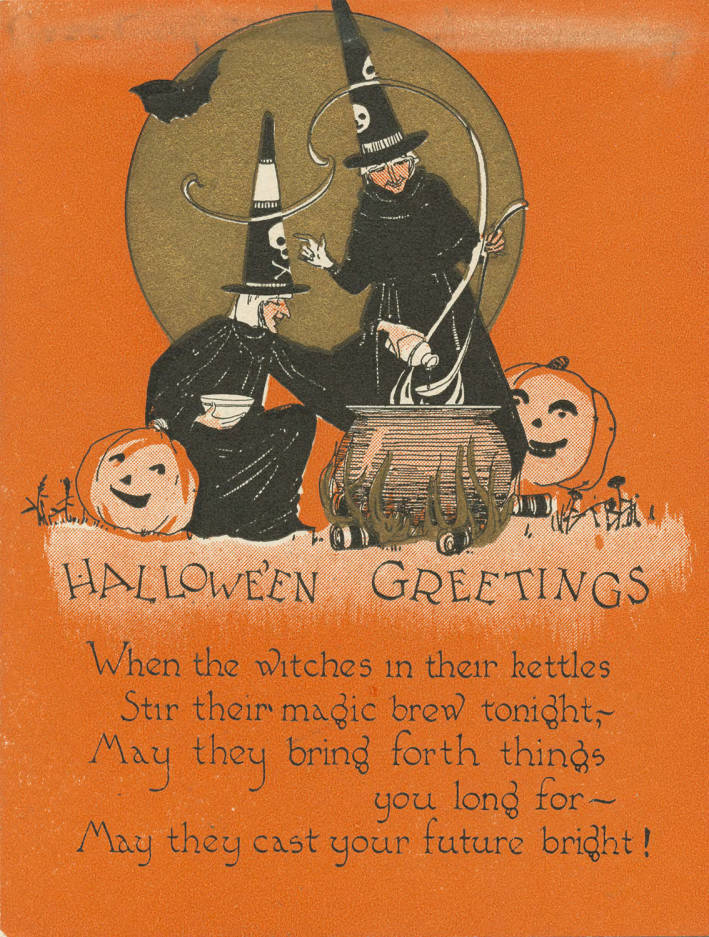 Orange postcard featuring two witches adding ingredients to a cauldron - two smiling jack-o'-lanterns look on. Below reads, "Halloween Greetings - When the witches in their kettles Stir their magic brew tonight,-- May they bring forth things you long for -- May they cast your future bright!" Postcard c. 1920, Enoch Pratt Collection, Maryland Digital Collections. The Witch's Cave Every Halloween party has a witch, sometimes several witches, flitting scarily here and there with abroomstick, or hovering over a kettle or presiding at a fortune-telling tent. At this part, however, the witch is the chief attraction and the source of all the entertainment. A big room, garret, hall, vestry of a church or possibly a barn or a garage would be suitable for the scene of the party, only one room being required. Instead of the usual booths, tents, tables, etc., the whole apartment is made to represent a witch's cave. Branches and limbs of trees, leaves, cornstalks, etc., are used in profusion, covering walls, hanging from rafters and strewn on the floor. Bats made from stiff paper are hung from the ceiling, rafters or chandeliers, low enough to brush against people as they pass by and add to the creepy effect. The more twigs, branches, stalks, etc., that are used the more ghostly will be the effect of the flickering lights through the branches and the shadows cast here and there. At one side of the room, or in a corner plainly seen from everywhere, is placed the witch's kettle, over which a very scary-looking witch presides. Underneath the kettle a make-believe fire is arranged with red electric lights or a red lantern showing the light through small twigs. On each side of the witch, a little back of her, stand two ghosts, sentinels and helpers of the witch. A black cat should be the witch's constant attendant; and she should carry the usual broomstick. The lighting of the hall or room is furnished entirely by jack-o'-lanterns or candles, although electric lights very heavily covered with red and green cloth or paper may be used, the weird ghostly effect being desirable. Ghosts are stationed here and there about the room and flitting in every direction. An orchestra or talking machine plays weird, doleful music until the guests have all assembled. Each guest, upon entering, is conducted about the room by a ghostly attendant, shakes hands with clammy-handed figures and hears doleful groans, until his arrival at the witch's kettle. Here the witch, after mumbling a charm over her kettle, draws therefrom a slip of paper on which is written a fortune. The person receiving the slip is not at first able to see anything on the paper, but upon being told to hold it in front of a candle the writing plainly appears. This feat is accomplished by writing the fortune with lemon juice, which does not show on the paper when written, but appears plainly when heated. After all have received fortunes the company is seated on low seats scattered here and there about the room. The music gives a particularly doleful wail and then stops, and in a sepulchral voice the witch announces that she will call forth from the land of gloom some spirits who will entertain the company for a short while. She then waves her wand and out from behind some curtains, which have been hung in one corner among the branches and stalks, there appears, as ifby magic, a procession of ghosts. They march in slowly to the tune of "John Brown's Body," singing as they march and executing a ghost slide or march. After the ghosts disappear the witch calls forth the "Lightning Bugs," little, darkly clad figures, so dark that they can scarcely be seen, each one carrying a flashlight. The hall should be as dark as possible for this act, as only the flash of the lights is desired to be visible. These lightning bugs go through a simple gymnastic drill with the flashlights, ending with a quick march. This act is very effective if done in time to rather slow music and, with considerable practice, will be a very pleasing addition to the entertainment. It is, however, absolutely necessary to have the hall dark throughout this stunt. The lanterns may be extinguished and all lights turned off, then lighted again at the close. The flashlights should be turned off now and then and turned on again quickly to give the lightning-but effect, although the exercises with the arms and the quick march will give that effect to some extent, the lights bobbing here and there in the dark. After the lightning buts have disappeared the lanterns are lighted and the witch calls forth the Pumpkin Quartet. These are four girls dressed in yellow cheesecloth or cambric dresses with long twisted pieces of green crepe paper on their heads, to represent the stems of the pumpkins. This act should have more light, which can be accomplished if desired by light thrown directly on the quartet. The quartet then sings several songs - preferably soft, harmonious four-part songs, such as lullabies and Southern melodies. If such talent is available there may be banjo or guitar accompaniments to these songs, the instruments to be played by ghostly figures or by other pumpkin characters. Then the quartet disappears and the witch waves her wand again. This time out come tripping, to light, swingy music, two little fairies dressed all in white with gauzy, silvery wings on their shoulders and wands in their hands. They stand on each side of the curtains, holding their wands to make an arch. Then the music plays a slow march and out from the curtains appear all the performers who have taken part in the entertainment, marching between the two fairies and forming in a half circle facing the audience, with an opening in the center of the half circle. Next the fairies hold their wands at salute and the music strikes up "Columbia, the Gem of the Ocean," while out from the curtains marches Columbia, carrying an American flag. She marches to the center of the half circle, the fairies leading the way, and the whole company of performers close the entertainment with the singing of "The Star-Spangled Banner." An Impromptu Barn Party A Puritan maiden called at various houses and, from a hollow pumpkin shell she carried, drew a corn husk which she gravely presented to whoever opened the door. The finest, softest, inside husks had been chosen; a pen-and-ink sketch, "three lines and a splash," of cat or witch or goblin pointed with fine dramatic gesture to the rime: Ghosts do dance And goblins prance In our barn to-night. Don't make much fuss, But join with us, With hearts both gay and light. When the guests arrived they were seated on piles of hay; a shock of corn was thrown before each one, and at a signal the corn husking contest began. Old-time tricks and games were then tried with great zest. The tables were decorated with pumpkin shells filled with fruit. The place-cards were corn husks; nut dishes were hollowed apples. The salad was of cottage cheese in individual services, each being shaped like a face with raisin eyes and pimiento mouth and nose. The sandwiches were of brown bread cut as witches' hats. A large cake was frosted with chocolate and on its dark background sheeted ghosts and spirited goblins in white-icing garments disported in perfect harmony. Candies and nuts ended the feast. Illustrated Novelties for the Parties The two illustrations at the top of the page and the two witches at the bottom are figures about six inches high and may be used for table decorations. A Halloween part invitation is shown both folded and unfolded. These sell for five cents each, and in orange and black are striking in appearance. Immediately below these are button-faced figures on a card to be used for an invitation or a place-card. The witch on the right and the fireplace at her right and the open gate below are given as examples of what may be done by the clever girl who can paint. In her basket the witch carries a real folded note of invitation; the kitty is real fur or felt and the garden gate actually swings on its hinges. The combined place-card and nut-cup favors may be purchased for about five cents each in shops selling such goods. Well! The Witch's Party certainly seems like it would be a LOT of work to organize and put on, requiring quite a few actors. The patriotic ending featuring Columbia, while seemingly out of place among a Halloween production, was typical of the period and boosterism for the war effort. That being said, the adorable barn party seems much more doable, provided one can find corn for husking! What do you think? Would you add any of these ideas to YOUR Halloween party? And here's a little bonus - a fun page of paper dolls from that same issue of the Ladies' Home Journal! Which costume would you wear? The Food Historian blog is supported by patrons on Patreon! Patrons help keep blog posts like this one free and available to the public. Join us for awesome members-only content like free digitized cookbooks from my personal collection, e-newsletter, and even snail mail from time to time! Don't like Patreon? Leave a tip!
0 Comments
In 1943, the USDA published the informational booklet Hunger Quits School. On December 5, 1942, President Franklin Delano Roosevelt signed an executive order creating the Food Distribution Administration, which oversaw, among other things, the school-lunch program. School lunch was influenced in part by the military draft. As many as a quarter of recruits were rejected for military service due to malnutrition. The panic around military readiness lead to many advancements in nutrition science and education of ordinary Americans about nutrition, including the development of the Basic 7 nutrition recommendations and yes, even school lunch. I've transcribed and shown the booklet in its entirety for your reading pleasure and edification. As you read you'll see how clearly school lunch programs were tied to military readiness even in the period, as well as how their execution differed in various communities. If you'd like to learn more about the history of school lunch, scroll to the bottom for reading recommendations. "Hunger has quit 93,000 schools throughout the United States where programs to provide noonday meals to students are operated by local communities in cooperation with the Food Distribution Administration. These programs are providing wholesome food to those who need it most - they are helping to build a healthy and physically fit population. Shortages of certain commodities cannot be permitted to impair the welfare of our future citizens. It is imperative that the youngsters who most need nourishing food get it in their school lunch. War adds to the urgency of the task. "A physically fit population and properly managed food supply are essential now more than ever before. Obviously, school-lunch programs are not substitutes for the courage of fighting men, for a fleet of airplanes, for guns, ships, tanks, or for the purchase of war bonds and stamps. Nevertheless, they are important in the Nation's War effort, since in modern total war the requirements for victory are indivisible." Images to left of text: Stylized black and white warship "Ships must transport food," stylized soldiers in a mess tent "Soldiers must eat," stylized workers in a factory with lunch room "Workers must eat," stylized woman typing and separate building with family in kitchen "Civilians must eat," stylized children sitting at table with knives and forks "Our children must eat." "WHY COMMUNITY SCHOOL-LUNCH PROGRAMS? "From the standpoint of the local community the reasons for operating lunch programs in the schools are immediate and easy to understand. Mothers and fathers, teachers and school administrators, doctors and health officers, and others in the community know the importance of having children eat properly. Since most children are away at school during lunch time for most of the year, the school lunch is an important part of the total diet of the individual. "Because parents, teachers, and others know the importance of proper food, that doesn't necessarily mean that all school children get the right kind of lunch or any lunch at all for that matter. In many cases, parents don't have enough money to put the right kinds of food in their children's lunch pails. In some cases - and this is increasingly true as more women go into war work - parents just don't have the time to put up the right kind of lunch for their children. In other cases, parents aren't well enough informed about nutrition to prepare an adequate lunch for their children. "All these and other factors have prompted local people to establish school-lunch programs as community enterprises. Programs are currently in operation to provide noonday meals to children in schools in every State and the District of Columbia, Puerto Rico, and the Virgin Islands. Thousands of persons - parents, teachers, volunteer workers, and well as paid workers - are giving their time and effort to carry on these projects, and millions of children are benefiting. "Although the Food Distribution Administration of the United States Department of Agriculture cooperated in school lunch programs in 93,000 schools during the 1941-42 school year by furnishing various foods without charge, the major responsibility for initiation of each program and for its successful operation is a community responsibility." Images to the right of text: Above, photo of young white boy outside a school eating a sandwich "The Cold Sandwich is no substitute." Below, photo of white children eating soup at a long table, caption continues ". . . For a Well-Balanced Hot Lunch." "METHODS OF ORGANIZATION DIFFER Just as there are tremendous variations in the types of communities, so are there considerable differences in the types of school-lunch programs. The complex organization of city life may find a parallel in the organization of the school lunch program in a large metropolitan area. In one large city, food for the lunch program is prepared in a big central kitchen. Hundreds of workers are engaged in such jobs as meal planning, food preparation, and dishwashing. From this central kitchen the food is delivered in heat-retaining containers by truck to the individual schools, where it is served to the children in lunchrooms. The children who can afford to pay for their meals do so with coupons which they buy at the school; those who cannot afford to pay are given coupons without charge. "The less complex pattern of life in rural areas may likewise be reflected in the organization of the school-lunch program. In one rural one-room school - and there are many of them in the United States - the children of the school bring various foods, such as potatoes and other vegetables, and seasonings from home. The teacher, with the assistance of the older students, prepares a single hot dish, usually a soup, a stew, or a boiled dinner. This hot dish is supplemented with foods which lend balance to the meal and can be eaten without cooking, such as citrus fruits or apples. The children set the tables and wash the dishes when the meal is finished. "These are but two of the many ways in which school-lunch programs are carried on. In operation they look easy. The routine is like clockwork. Each participant knows his job and does it. But even the most simple school-lunch project requires careful planning and hard work. Its successful operation depends on the continuing active interest of the local community." Images to left of text: Top, black and white photo of white adult women helping white students at lunch table, "The teacher, with the assistance of volunteers in the community, prepares the lunch." Bottom, black and white photo of open kitchen with white women cafeteria workers and line of white children, "Full-time workers prepare the food in a central kitchen from which it is delivered to the individual schools." "HOW TO GET STARTED IN YOUR COMMUNITY "Suppose the school in your community does not have a lunch program and you would like to see one in operation. How do you go about getting it started? "The first thing to keep in mind is that this is a job for your local people - yourself and your neighbors. Various agencies of the Government may lend you technical assistance, but the primary responsibility is yours. "If you have the interest and the willingness and the perseverance to follow through on a community lunch program, the thing to do is to get together with your neighbors, the parents of other school children, and see how much interest you can arouse and how much support you can get for the proposal. You will need much support if your plan is to be a success. "What you do next depends on what kind of community you live in. The procedure in a city of 100,000 population is different from that in a rural area. The steps to take are different in a city of 20,000 from those in a village of 2,000. But the procedure that has been followed in these different types of communities will give you an idea of what lies ahead in your effort to get started. "In one city of more than 100,000 population a group of mothers presented their proposal for a school-lunch program to the teachers and the principal of their neighborhood school. They were given a sympathetic hearing and arrangements were made to present the plan to the city superintendent of schools and the board of education. The meetings resulted in a survey to ascertain what facilities were available in the various schools for the operation of a lunch program on a city-wide basis, what additional facilities would have to be provided, and what would be needed in the way of financing. "The survey completed, plans were laid to put the school-lunch program into operation. Some of the needed facilities were provided from public funds, and" [. . . continued on next page] Image to right of text: Black and white photo of seated white adults as at a public meeting, "This is a job for local people . . . yourself and your neighbors." [continued from previous page] "the remainder was purchased by a number of civic and fraternal organizations which took an interest in the project. A permanent staff of paid workers was hired, and their work was supplemented by the work of volunteers. Much of the food was purchased locally, but some was provided without cost by the Food Distribution Administration. Those children who could pay a nominal sum for their lunch did so, and those who could not afford to pay were fed without charge. "Teachers took the initiative in serving lunches at school in one village of 2,000. They had seen some children sitting out in the cold eating sandwiches and others having nothing at all to eat. Investigating the possibilities of doing something about it, they learned that a school-lunch project was in operation in a nearby community. At the next meeting of the parent-teacher association they brought up the idea of a school-lunch program. The result was the appointment of a committee to visit the neighboring village and see how the program operated there. The committee made an enthusiastic report at the next meeting, and it was decided to present the whole matter to the local school board. "After a number of conferences with representatives of the State welfare department, the FDA, and other interested groups, the school board agreed to formally sponsor the lunch program. A lunchroom was set up in part of the school basement which was not in use. The county home demonstration agent provided technical assistance in meal planning. Two full-time paid workers were hired, and the rest of the labor forced was made up of volunteers. "The entire community, in one rural area, pooled its efforts to get a lunch program going in its one-room school. It was a real job, as the school lacked" [. . . continued on next page]. Images to left of text: Top photo, white adults gather around a table looking at papers "Parents and school authorities discuss a proposed school-lunch program." Bottom photo, white adults sit in auditorium, "Civic and fraternal organizations play an important part in the success of many school-lunch programs." [continued from previous page] "everything in the way of facilities and had no available space for cooking or serving. The men of the community solved the problem by getting together enough salvaged lumber and building a lean-to addition to the school, also tables and benches. The women of the community meanwhile organized a shower to collect the necessary pots, pans, and other cooking utensils. A merchant in the nearby town donated a second-hand stove. Each child brought his dishes and "silver" from home. Each family provided foods, and the mothers took turns going to the school to do the cooking. The school board, of course, approved the undertaking and formally sponsored the program to make it eligible for FDA assistance. "Should you contact anyone else for help in getting a school-lunch program going in your community? There is no one answer. In many counties there are home-demonstration agents, home-economics teachers, and home supervisors of the Farm Security Administration who can supply technical advice and assistance. Parent-teacher organizations, civic organizations, chambers of commerce, veterans' organizations and auxiliaries, State and local education departments, State and local health organizations, State and local welfare agencies, and the WPA are among the groups which have helped in other communities. In many cities there are representatives of the Food Distribution Administration who can supply information and advice regarding procedure for obtaining reimbursement from the FDA for the purchase of specified foods. "Your first objective in getting a school lunch program started is, of course, better meals for the children in school. This, too, was the main objective in the thousands of communities which are now operating the programs. These communities have found that many benefits to the children in school have stemmed from better nutrition." Images to right of text: top photo, white women stand next to table of plates of food, actively plating, "Teachers took the initiative in serving school lunches in a small community. Bottom photo, two white women stand in kitchen cooking, "Lunches like this mean more adequate diets for millions of children every day." "BETTER NUTRITION NOT THE ONLY BENEFIT "Records kept in many schools show that attendance is better after a school-lunch program is put in operation than it was before. One school reports 11 percent fewer absent than before the lunch program was started, another 8 percent; and still another 15 percent. Investigation shows that in many cases the better attendance is the result of less illness. Proper food does much to prevent illness, especially in growing children. "Thousands of doctors and dentists have gone into the armed forces. War needs have taxed our health facilities all along the line. It is more important than ever that as much illness as possible be prevented. To the extent that school lunches keep children healthy they are making a direct contribution to the welfare of the Nation at war. "There are many striking reports of children who have been built up physically as a result of eating school lunches. In one midwestern community an undernourished boy gained 25 pounds during a single school year. Many examples like this could be cited. Not only such run-down children, but in many cases the entire class of a school reports better physical fitness as a result of school lunches. "Many prominent health authorities have pointed out that it is a waste of the taxpayers' money to try properly to educate children who are malnourished. They simply cannot do good work when they are hungry. Such records as have been kept show that in almost every school where adequate lunches are provided the students are making better progress in their studies than formerly. "Teachers report that students are better behaved when they are properly nourished. Eating together in groups improves the table manners and the per-" [. . . continued on next page] Images to left of text: Top photo of white men administering vaccinations to other white men, "Thousands of doctors and dentists have gone into the armed forces." Bottom, young white children play on equipment outside, "Keeping children healthy is a direct contribution to the welfare of the Nation at war." [continued from previous page] "[per]sonal habits of many youngsters. Through the example of watching their schoolmates eat certain foods, children come to like foods previously unfamiliar. They eat what is put on the table. "In many communities the benefits of the lunch program are carried into the home. Children have reported back to their mothers the things that they learn about diet and better nutrition, with the result that the meals of whole families frequently have improved. "It is apparent that these benefits to children are all good reasons for parents, teachers, and local communities to be interested in school-lunch programs. How about the Federal Government and the Food Distribution Administration? "FDA'S PART IN SCHOOL-LUNCH PROGRAMS "One of the important jobs of the FDA is to assist in the management of the Nation's wartime food supply through the stimulation of increased production, the maintenance of machinery for orderly marketing, and the prevention of waste. School lunches, in addition to feeding those who most need proper nourishment, are one of the devices used in helping to do these jobs. "In recent months the war effort has made it necessary not only to maintain existing levels of food production but to increase these levels greatly. Although there has been a tremendous expansion in food production during the past year, some production goals have been revised upward. Under these conditions, when concerted efforts are being made to increase food production, it is important that farmers be able to market all they grow. Market stability is thus an important factor in stimulating increased production. "Not only is market stability important as an incentive to ever increasing output, but it is important in guarding against waste of food already produced." Images to right of text: top, a white farmer stands in the furrows of a field with sacks of potatoes, "It is important that good use be made of all that farmers produce." Bottom, two white men shake hands outdoors, "Sponsors buy from local producers and are reimbursed by the Food Distribution Administration." "In the past unstable markets sometimes made it impossible for farmers to harvest their entire crop and sell it at a price that would cover their costs. The result, when such conditions prevailed, was that part of the crop was not harvested but was left in the fields or in the orchards to rot. Such conditions might arise again for some commodities, even though supplies of certain other foods may be short, and if they do the school-lunch programs are a mechanism to prevent possible waste. "Sometimes food purchased originally for shipment abroad under the lend-lease program could not be used for this purpose because of changed requirements of our allies, lack of shipping space, or other uncontrollable factors. In such cases the school-lunch program provided a desirable outlet for the commodities. "In the past, the FDA's job in connection with school-lunch programs was to buy up foods and to channel them to schools for use by the youngsters who needed them most. Purchases were sent in carlots to the welfare departments of the various States. The State welfare department distributed foods to county warehouses which in turn distributed part of the supply for use in lunch programs in eligible schools. "Shortages born of the war - transportation, equipment, manpower - necessitated a revision of this distribution plan. In some large communities, commodities are still distributed to schools from warehouses operated by State welfare departments, but in most communities the program is now carried on under a local purchase plan. "Under this new local purchase plan, the FDA reimburses the sponsors for the purchase price of specified commodities for the lunches. The commodities eligible for purchase under the plan are given in a School Lunch Foods List which is issued from time to time. Products in regional abundance and those high in nutritional value have first consideration in compiling the lists. Sponsors buy from producers or associations of producers, or from wholesalers or retailers. They are reimbursed for the cost of the commodities up to a specified amount" [. . . continued on next page]. Images to left of text: top, two men load stack barrels, "A few foods are still available from the FDA for delivery to schools in some areas." Bottom, box trucks lined up outside a building as a man loads a box, "Sponsors arrange for the delivery of foods to the schools where they are used." [continued from previous page . . .] "which is based on the number of children participating, the type of lunch served, the financial resources of the sponsor, and the cost of food in the locality. "In addition to those foods for which the FDA provides reimbursement of the purchase price, local sponsors buy with their own funds such additional commodities as are needed to round out the meals. What better use can be made of some of our food supplies than to make them available to growing children who otherwise may not get enough to eat? "WHAT SCHOOLS ARE ELIGIBLE? "Schools eligible to participate in the program must be of a nonprofit-making character and must serve lunches to children who need them. Schools receiving FDA assistance must permit no discrimination between children who pay for their lunches and those unable to pay. A formal sponsor, representing the school, must enter into an agreement with the FDA that the conditions governing the program will be complied with. Nonprofit-making nursery schools and child-care centers are eligible for participation in the program. "From the standpoint of our national welfare it is important that all school children be properly nourished, and that all food produced be properly utilized. This explains the interest of the Federal Government in the community school-lunch program, since the Government represents all the people acting in concert. "Although the school-lunch programs alone have not succeeded in reaching all children who need more adequate nourishment, they have been instrumental in bringing food to a substantial number of them. During the peak month of March 1942 the lunch programs in which the FDA was cooperating fed 6,000,000 children. Nor have the lunch programs alone succeeded in making possible the most effective utilization of all foods produced. But they have been one means of working toward these two objectives. "The lunch programs have been a means of forcing hunger out of a great many schools in the United States." Images to right of text: Top: young white girls at play on a see-saw. Middle: a school building. Bottom: a white nun gives a sandwich and bottle of milk to a young white boy. "FOR MORE INFORMATION ON HOW TO GET A SCHOOL LUNCH PROGRAM STARTED IN YOUR COMMUNITY WRITE TO THE NEAREST REGIONAL OFFICE OF THE FOOD DISTRIBUTION ADMINISTRATION "If you live in one of the following States: Main, New Hampshire, Vermont, Massachusetts, Rhode Island, Connecticut, New York, New Jersey, Delaware, Maryland, or West Virginia - Write to: Food Distribution Administration Regional Office, 150 Broadway, New York, N.Y. "If you live in Virginia, Kentucky, Tennessee, North Carolina, South Carolina, Georgia, Florida, Alabama, or Mississippi - Write to: Food Distribution Administration Regional Office, Western Union Building, Atlanta, Ga. "If you live in Ohio, Indiana, Michigan, Wisconsin, or Illinois - Write to: Food Distribution Administration Regional Office, 5 South Wabash Ave., Chicago, Ill. "If you live in Minnesota, Iowa, Missouri, Kansas, Nebraska, South Dakota, or North Dakota - Write to: Food Distribution Administration Regional Office, Old Colony Building, Des Moines, Iowa. "If you live in Arkansas, Louisiana, Oklahoma, or Texas - Write to: Food Distribution Administration Regional Office, 425 Wilson Building, Dallas, Tex. "If you live in New Mexico, Colorado, Utah, Idaho, Montana, or Wyoming - Write to: Food Distribution Administration Regional Office, 1536 Welton Street, Denver, Colo. "If you live in Arizona, Nevada, California, Oregon, or Washington - Write to: Food Distribution Administration Regional Office, 821 Market Street, San Francisco, Calif." And that is the end of the transcription! What did you think? Were there any surprises in there for you? I had known for a long time that the school lunch program was a way to use up agricultural surpluses AFTER the war, but hadn't realized that using up wartime surpluses was a factor since the beginning. I also liked the emphasis on treating children who couldn't afford to pay no differently than those who could. FURTHER READING: If you'd like to learn more about the history of school lunch, check out these additional resources. (Purchases made from Amazon links help support The Food Historian):
Happy reading! The Food Historian blog is supported by patrons on Patreon! Patrons help keep blog posts like this one free and available to the public. Join us for awesome members-only content like free digitized cookbooks from my personal collection, e-newsletter, and even snail mail from time to time! Don't like Patreon? Leave a tip!
Home canning was promoted as essential to the war effort in both World Wars, but the First World War introduced ordinary Americans to a lot of research on the effectiveness and science of home canning. Although safe canning was still in its infancy (water bath canning low-acid vegetables was still sometimes recommended by home economists at this time, which we now know is not safe), approaching it with a scientific method was new to most Americans. This particular poster's purpose is unclear. Perhaps it was meant to demonstrate the best method of fitting fruits and vegetables into the jars. It is certainly beautiful. The unknown artist illustrated the clear glass wire bail quart and pint jars beautifully. Three quart jars are across the top containing perfectly layered halves of peaches, whole blackberries, and white Queen Anne cherries. Three pint jars across the bottom contain trimmed okra stacked vertically and horizontally, yellow wax beans (labeled "string beans"), which may have been pickled as a tiny red chile pepper can be seen near the bottom of the jar, and "soup mixture" containing white navy or cannellini beans and a red broth that likely contains tomatoes. Wire bail jars work by using rubber gaskets in between the glass jar and a glass lid to get the seal, held in place by tight wire clamps. Although beautiful, they are not recommended today for safe canning. They do, however, make effective and beautiful storage vessels for dry goods like flour, dried beans, spices, dried fruit, etc. (I recommend storing nuts in the freezer to prolong freshness.) Glass wire bail jars were common in the 1910s for home canning and became particularly important for the war effort as aluminum and tin became scarce due to their use in commercial canning and in wartime manufacturing. The poster interestingly includes vegetables in wire bail jars and even bean soup, which is not generally recommended to be canned with the water bath method. If the beans were pickled, they could be safely water-bath canned, but other low-acid vegetables like okra (unless also pickled) need to be pressure-canned to prevent the growth of botulism, a deadly toxin that can survive boiling temperatures. Although pressure canners existed during WWI, they were not in widespread use as they required the purchase of specialized equipment. Community canning kitchens were developed in large part to help housewives share the cost (and use) of more expensive equipment like pressure canners, steam canners, etc. This poster is from the United States Department of Agriculture (USDA) and is labeled "Home Demonstration Work," which indicates it may have been used by home demonstration agents, or trained home economists hired by the USDA, cooperative extension offices, or local Farm Bureaus to train housewives in best practices for home management, including food preparation and preservation. Home demonstration work was in its infancy during World War I, and expanded greatly after the war. What do you think the purpose of this poster is? Share in the comments! The Food Historian blog is supported by patrons on Patreon! Patrons help keep blog posts like this one free and available to the public. Join us for awesome members-only content like free digitized cookbooks from my personal collection, e-newsletter, and even snail mail from time to time! Don't like Patreon? Leave a tip!
It's prime canning season! If you're facing a glut of tomatoes or more than ready for apple picking so you can make your own sauce, this post is for you. During both World Wars, home food preservation was vital to freeing up supplies of commercially canned goods for feeding soldiers and the Allies. But not everyone was used to canning at home, and even those who were experienced sometimes relied on unreliable or dangerous methods. For instance, my great-grandmother oven canned, which is no longer considered safe. And some folks still try to turn their jars upside down for a seal, which is not recommended. All canned foods work by creating a sterile vacuum seal. High-acid foods like fruit, tomatoes, and vinegar pickled foods can be canned in a water bath, where boiling water (212 F) kills bacteria and seals the jars. Low-acid foods like non-pickled vegetables and meats need to be pressure canned. The pressure canner increases the pressure inside the chamber, which allows water to boil at a much higher temperature. This kills all bacteria, including deadly botulism, and makes the low-acid foods safe to can. One of the ways home economists and the federal government tried to educate people about canning and food safety was through propaganda posters like this one. Here's the advice from the poster: "Don't can wilted, over-ripe or partly spoiled food... it won't keep." If you wouldn't eat it fresh, you shouldn't can it. Although lots of rhetoric during the war was about saving food and preventing waste, canning can only preserve, not restore the quality of food. Poor-quality ingredients makes for poor-quality canned goods, wasting time and effort. "Don't prepare more than your canner will hold. Food spoils if it stands around." Canning takes time, and leaving cut fruits or vegetables lying around waiting to be put into jars makes them more susceptible to collecting bacteria or spoiling. Canning depends on sterile jars and fresh ingredients. Although it can be tempting to work ahead, time your work carefully to avoid waiting. "Don't pack too tight... especially corn and greens. Tightly packed jars heat through too slowly." Canned goods need to be heated through entirely to create a proper vacuum seal and prevent the growth of bacteria. Especially for low-acid foods like corn and greens, proper heating is essential to successful canning. Tightly packed jars not only risked spoilage, they also wasted fuel as it would take them longer to heat through, if at all. "Don't lose track of time... follow timetables to the minute for successful canning." We've all been there. That's what kitchen timers are for. While over-cooking doesn't usually hurt, under-cooking can result in improper seals. Better to use the timer and be sure. Test kitchens and home economists and scientists developed the time tables to ensure a minimum amount of time in the boiling water bath or pressure cooker to ensure adequate seal and food safety. "Don't stand hot jars on their heads... you may break the seal." Although some people still do this to "ensure a good seal," a heat seal is not the same as a vacuum seal, and liquids touching the tops of the cans before they are fully cooled may break the seal and allow air and bacteria in, leading to spoilage. "Don't place hot jars on a cold surface or in a draft." They may break or explode. Seriously. This is also why canning jars need to be heated before filling - not only for sterilization, but also to prevent shock and cracks or breakage. Canning can be intimidating, and certainly time-consuming, but the push to get Americans to participate in home food preservation was a hard one. Although it can be difficult to balance the effort of canning with modern lives, the urgency of food preservation during World War II meant people carved out the time to make the effort. Do you can at home? I usually don't have the time, although nothing beats home canned applesauce (at least, my mom's style) and jam. A friend of mine keeps me supplied with amazing homemade jams. They're worth every penny. Especially since then I don't have to do the canning myself! Share your canning memories and stories (or horror stories) in the comments! The Food Historian blog is supported by patrons on Patreon! Patrons help keep blog posts like this one free and available to the public. Join us for awesome members-only content like free digitized cookbooks from my personal collection, e-newsletter, and even snail mail from time to time! Don't like Patreon? Leave a tip!
This image was making the rounds in some of my social media art groups, so I thought I would dig into the story behind it for World War Wednesday! Titled, "Lunch Break," and painted by commercial artist Arthur Sarnoff, the painting features a beautiful blonde woman in a red headscarf (a la Rosie the Riveter), a yellow blouse, and blue overalls using her welding torch and tongs to toast what appears to be a cheese sandwich. Another lays in her lap in a white paper wrapper, on top of her welding gloves. A green metal lunch box featuring a thermos, an apple, and orange, and another paper wrapped bundle of what appears to be more sandwiches sits on the bench before her. Although not quite done in pinup style, the painting is far more romanticized than, say, Norman Rockwell's "Rosie the Riveter," with her smudged face, dirty attire, and muscley arms. Sarnoff painted "Lunch Break" for Argosy magazine. Founded in the 1880s as a pulp short fiction magazine, by the Second World War it was shifting more towards a men's magazine, with some fiction interspersed with "true tales" of men doing heroic things. The style of art reflects that shift, with a pretty, dainty blonde using her blowtorch to make cheese sandwiches on her lunch break, rather than depicting her doing actual work. Her makeup, hair, and red-painted shaped fingernails are pristine, and the gloves in her lap look scarcely used, clean and with sharp creases still on the cuffs. I was not able to find a full-size image of the Argosy cover, so I don't know the date it was published. And while the badge on her overalls is large in the painting, the "words" are just gibberish brush strokes. I can only guess at its meaning. Although Rosie gets most of the attention, "Winnie the Welder" (sometimes also "Wendy the Welder") was in many ways more important than riveters. Women welders during the Second World War made up as much as 65% of welders in the country and were crucial to shipbuilding efforts for both warships and cargo and freight vessels. Women of all ages were thrown into welding with some cursory training, but for the most part their dedication and skill allowed them to adapt quickly to the new, often dangerous environment. As for the toasted cheese sandwich - although aged cheese like cheddar was officially rationed, cheese was often touted as a meat substitute during the Second World War. That bread doesn't precisely look like a whole wheat Victory loaf, though! And even holding it that far away, you'd have to be quick about toasting with an oxy-acetylene torch - they can get up to temperatures of 5,600 F. The fantasy depicted in "Lunch Break" is mostly just that - fantasy. But regardless of its historical accuracy, it's a striking image of concepts about women, work, and food during the Second World War. Further Reading:
To see some women at work (albeit in steal manufacturing, with just a glimpse of riveting and welding), you can watch the short documentary film below, "Women of Steel" (1943). The film is an odd mix of feminism and can-do attitude mixed with patriarchal ideas of what happens "when the boys come home." What a mixed message for women to be receiving during the war! Interestingly, however, it does depict the women using a factory's cafeteria, which was probably preferable to bringing your lunch from home. The Food Historian blog is supported by patrons on Patreon! Patrons help keep blog posts like this one free and available to the public. Join us for awesome members-only content like free digitized cookbooks from my personal collection, e-newsletter, and even snail mail from time to time! Don't like Patreon? Leave a tip! This is one of the more famous food-related posters of the First World War. Created by famous illustrator and artist James Montgomery Flagg, "Sow the Seeds of Victory," and its sister poster (below) "Will you have a part in Victory?" were both produced by the National War Garden Commission, headed by Charles Lathrop Pack. The bottom of each poster reads "Every Garden a Munition Plant" with instructions in the lower right-hand corners reading "Write to the National War Garden Commission - Washington, D.C. for free books on gardening, canning, & drying." The posters both feature the same image - the United States embodied as Columbia, striding boldly, sandaled feet marching through a freshly plowed field, and broadcasting seed from a round basket. Columbia wears her Classical-style dress in the colors of the American flag - red, white, and blue - and wears a Phyrgian cap on her head, a symbol of freedom and liberty. The poster implies that by planting gardens, ordinary Americans could "Sow the seeds of Victory" and "plant and raise your own vegetables" - helping the war effort both literally and symbolically. Although "Every Garden a Munitions Plant" is a bit on the nose, the martial language helped reinforce the importance of growing vegetables at home, rather than consuming fuel and war materiel by purchasing vegetables grown far away, or canned commercially. The phrasing of the first poster is more in line with the sentiment of the image, and was likely the first produced. "Will you have a part in Victory" implies that the viewers may have already seen the first poster and understand its original intent. The Library of Congress estimates that these posters were produced in 1918, which is entirely possible, but the National War Garden Commission had instructional booklets on gardening, canning, and drying all published in 1917. Given that the NWGC was one of the first organizations to advocate for war gardens, even before the outbreak of war, so it is possible these are from 1917. Ironically, James Montgomery Flagg helped hasten the demise of Columbia as a symbol of the United States. His depiction of Uncle Sam, first featured on the July 6, 1916 cover of Frank Leslie's illustrated newspaper asking "What are YOU doing for Preparedness?" - he later repurposed the image, inspired by Britain's Lord Kitchener, into the infamous "I Want YOU" Army recruitment poster, which was so effective it was recycled for the Second World War. By the 1930s, Uncle Sam (and his feminine counterpart, Aunt Sammy) had completely superseded Columbia as a symbol of the United States. The Food Historian blog is supported by patrons on Patreon! Patrons help keep blog posts like this one free and available to the public. Join us for awesome members-only content like free digitized cookbooks from my personal collection, e-newsletter, and even snail mail from time to time! Don't like Patreon? Leave a tip! We've all had those days. Days where we forgot to bring lunch to work and can't get away to buy it, or when we bring a sad, cobbled-together lunch, or when we pick up fast food or something with empty calories. For many of us, a slow-moving afternoon or the distraction of a rumbling stomach isn't the end of the world. But during the Second World War, people didn't have the luxury of distraction of fatigue. This bold propaganda poster from c. 1943 features a yawning male worker leaning on the surface of what appears to be a stamping or hammering machine. He says, "Ho hum," feet crossed, leaning on his elbows, as a heavy block of metal descends toward his head. The poster reads, "Avoid fatigue! Eat a lunch that packs a punch!" During WWII, the United States engaged in total war. That meant that nearly every aspect of American society shifted toward the war effort. Nowhere was this more clear than in the everyday work of people in manufacturing. Men who weren't drafted for the war or working on farms often worked in factory settings. Factories that previously made machinery for consumer use - automobiles, refrigerators, washing machines, etc. - now found themselves manufacturing warplanes and Army jeeps and munitions. Factories worked on round-the-clock schedules, with three shifts a day. Some people worked much longer than 8 hours at a time. Although great strides had been made in ergonomics in factory work during the 1940s, the pressure of keeping up with military contracts and quotas was great. People often got too little sleep, and rationing made food supplies tight. During the war the U.S. federal government issued the Basic 7 - the first national nutrition guidelines ever issued. Based around the idea of balancing vitamin intake with protein, carbohydrates, and fats, the Basic 7 helped ordinary Americans better understand nutrition. Which is exactly what this poster is alluding to. "Eat a lunch that packs a punch" was a slogan also showed up in other posters, and alluded to calcium to keep bones strong, protein to build muscles, and Vitamin A to improve eyesight, among others. But this poster focuses on fatigue, which was a very real threat to the war machine. Tired workers made mistakes, hurt themselves, and could hurt or kill others. Operating flat out didn't leave room for mistakes, and a labor shortage thanks to the draft made skilled workers difficult to replace. Unbalanced meals, or not enough to eat, did not give war workers the energy they needed to perform at the highest levels at all times. The pressure of wartime work must have seemed unbearable at times. And with women increasingly joining the workforce and/or managing victory gardens and food preservation at home, not to mention coping with rationing, the idea of packing a large and nutritionally balanced lunch must have seemed like a lot of extra work for people. But while cafeterias were sometimes available, most people in factory work still packed their lunches. And while working at high speeds with dangerous equipment, it was worth it to make sure you weren't going to be too tired to do your job. There was no room for slacking off at work during the war, and getting proper nutrition to keep in peak physical health was so important the federal government spent a great deal of money advertising basic nutrition concepts (along with lots of posters about workplace safety) to ordinary Americans. Total war meant total commitment, total effort, and total focus. Staying healthy and well-fed was all part of total war. The Food Historian blog is supported by patrons on Patreon! Patrons help keep blog posts like this one free and available to the public. Join us for awesome members-only content like free digitized cookbooks from my personal collection, e-newsletter, and even snail mail from time to time! Don't like Patreon? Leave a tip!
I am an unabashed fan of cottage cheese. I don't know when I first realized how delicious it is. Growing up, it always seemed some rubbery gross thing old ladies on a diet ate. Probably because the cottage cheese I tasted was likely skimmed milk cottage cheese and probably not very good quality. I certainly didn't think serving it with fruit or jam was a good idea, as was often touted by advertisements.
These days, cottage cheese has largely been superseded by yogurt, as NPR discussed in 2015, but I'm not sure that's a good thing. Cottage cheese is a very old style of fresh cheeses - a family that also encompasses ricotta, mascarpone, cream cheese, feta, mozzarella, goat and other un-aged cheeses that spoil rather quickly compared to their older cousins. But while all those other cheeses get their praises sung, cottage cheese gets short shrift (although not as short as farmer cheese, pot cheese, and dry cottage cheese, which are even harder to find). This propaganda poster from World War I exhorts Americans to "Eat More Cottage Cheese" and "You'll Need Less Meat" - comparing the protein in a pound of cottage cheese favorably to a pound of beef, lamb, pork, veal, and chicken. The First World War saw a dairy surplus, especially in 1918 as dairy farmers across the country fought for better fluid milk prices as cheese and evaporated/condensed milk stores overflowed and feed and labor prices went up. Food preservationists encouraged people to eat more dairy products, especially in the spring of 1918 when a huge milk surplus going into spring dairy season boded ill for the farmers and fair prices. Cottage cheese was touted as a meat substitute to kill two birds with one stone - it ate up some of the dairy surplus while also allowing people to eat less meat. As the poster suggests, cottage cheese was also far cheaper than meat, and still is today, although the gap has closed somewhat. The current national average price for a pound of ground beef is $5.41, and in April, 2022 the average price of a pound of boneless chicken breast was over $4, the highest in 15 years. A pound of cottage cheese has held pretty much steady between $2 and $4/pound, depending on the brand. My local grocery store brand, which is quite good, has 24 oz. (1.5 pound) containers available for just over $3, and often $2.50 or less on sale. Cottage cheese was also touted as a substitute during World War II, and post-war skimmed milk cottage cheese was promoted as a high-protein diet food, which is perhaps why so many of the latter generations disdained it.
A number of cookbooks and recipe pamphlets promoting cottage cheese use were published during World War I, including the above 100 Money-Saving Cottage Cheese Recipes published in 1918 by the Gridley Dairy Company and containing recipes like "Liberty Loaf," "Cottage Cheese Relish," "Cheese Pancakes," and over a dozen recipes for "Cottage Cheese Pie," plus cheesecakes!
Much of the advertisement of cottage cheese tended toward the sweet, like this hilariously 1950s advertisement from Borden, which features cottage cheese with jam, with maple syrup, and with fruit in a salad:
But most of my favorite recipes for cottage cheese treat it like the savory cheese it is. It's great in dips for raw veggies, as a topping for roasted vegetables, in savory salads, and yes, as a substitute for meat in fried foods. I even use farmer cheese (drained cottage cheese) in my favorite pastry crust recipe, which I use to make everything from cookies and apple butter bars to Cornish pasties and lentils Wellington.
Frankly, most Progressive Era reformers would have been better off asking Eastern European immigrants for the best ways to use cottage cheese, as it features prominently in Russian, Polish, Ukrainian, and Georgian cuisines. The USDA did a little better with their accompanying pamphlet on cottage cheese cookery:
Cottage Cheese Dishes: Wholesome, Economical, Delicious was published in 1918 by the USDA and contains slightly more sensible, savory uses for cottage cheese, including in salad dressings, scrambled eggs with cottage cheese, potato croquettes, and a lovely-sounding cold weather dish they call "Cottage Cheese Roll," which is cottage cheese mixed with cooked rice or breadcrumbs, seasoned well, and mixed with chopped vegetables, olives or pickles, leftover cold meats, canned salmon, etc. and formed into a roll which is then sliced and served on a bed of shredded lettuce. A suggested "Hot Weather Supper" is "cottage cheese roll made with rice and leftover salmon, served on a bed of lettuce leaves, with mayonnaise dressing; sliced tomatoes, oatmeal bread with nuts, whey lemonade, crisp fifty-fifty raisin cookies." The menu hits all the World War I food spots with a meat substitute (no, salmon wasn't considered "meat"), using up leftovers, using cottage cheese, using wheatless bread with protein-giving nuts, waste-less whey lemonade, and inexpensive and likely low- or no-sugar raisin cookies for dessert. How's that for conforming to rationing directives!
It also includes directions for making cottage cheese (which is incredibly easy to do at home - you just need a lot of milk, heat, and patience) and more importantly in my mind, some recipes for using up the leftover whey, including the aforementioned whey lemonade! How do you like to eat your cottage cheese?
The Food Historian blog is supported by patrons on Patreon! Patrons help keep blog posts like this one free and available to the public. Join us for awesome members-only content like free digitized cookbooks from my personal collection, e-newsletter, and even snail mail from time to time! Don't like Patreon? Leave a tip!
As I delve deeper into research on the farm labor shortage for my book, I'm starting to realize that the main theme of the home front in the First World War is that there were a whole bunch of people doing largely the same thing at the same time, and it wasn't until really the end of 1917 into 1918 that government agencies figured things out enough to actually get everyone properly organized. This poster is just one example of that. "We Eat Because We Work," a poster featuring cherubic White children digging and watering what are presumably radishes (judging by the contents of the basket) on a sunny hillside overlooking a flag flying not the American flag, but one of the United States School Garden Army, reads a little more ominously in the context of say, Nazi Germany, or Orwell's 1984. But when the U.S. School Garden Army was founded, and likely when this poster was produced, terms like "dictator" and "propaganda" had far more innocent meanings. Still, this poster does seem to imply, consciously or not, that children who do NOT work, will NOT get to eat. I doubt it was meant that way. Instead, like many propaganda posters of the First World War, it was meant to inspire people to participate. This poster sent me down the rabbit hole a bit, in part because the online history of The United States School Garden Army was so vague, and I'm a stickler for exact dates. Rose Hayden-Smith has written about the United States School Garden Army, but even she isn't super clear on when exactly the "army" was founded. The Farm Cadet program, which literally "enlisted" high school-aged boys into farm work on military-style camps, was founded in New York State in April of 1917, just days after the United States entered the war. A May 5, 1917 article in the New York Times mentions the "National School Children's Garden League," but only to mention a fundraiser for the league. It's the only reference I've been able to find of that organization. By June, 1917, Port Jervis, NY is discussing school gardens in conjunction with the Farm Cadet program, but school gardens as pedagogy had been popular throughout the Progressive Era. It seems that despite claims online that the United States School Garden Army was founded in 1917, it wasn't until March of 1918 that the USSGA was official. The Newburgh, NY Daily News published "Millions of Children to Enlist in Nation's School Garden Army" on March 20, 1918. The article suggests that this is a brand new endeavor, mentioning several times that this "new army" and "plans" "will begin soon." The "draft" age for the United States School Garden Army was 9-16 years old, both boys and girls. The cut-off age of 16 was so that boys aged 16 and older could participate in the Farm Cadet program. This poster features children who look younger than nine years old, but perhaps young cherubs were more attractive models than gangly pre-teens. As Hayden-Smith argues, the United States School Garden Army was designed to turn children from consumers into producers, at least temporarily. Critiques of the use of child labor were assuaged by assurances that the work would be for no more than a few hours a day, and always supervised by teachers or other staff. The work of the USSGA continued for several years after the war, still going strong in 1919 and 1920, likely because the High Cost of Living was keeping food prices up, and school gardens raised produce to be consumed by students on site, thus lowering school cafeteria costs. In fact, most of the articles from late 1919 and early 1920 talk about the financial benefits of the school gardens, in addition to the social and emotional benefits. In today's context, the discussion of the financial benefits of child labor seems mercenary, at best, but the school garden movement did have social and emotional benefits as well - being out-of-doors, the "stick-with-it-ness" of tending living things, and the rewards of getting to eat the results of your hard work. School garden programs that help provide for school cafeterias have been revived in recent years as a way to engage students with "real" food and create affordable access to fresh, local fruits and vegetables, especially in areas of food deserts. But growing school gardens isn't cheap, nor is it easy. In much of the nation, the best garden growing months are when school is not in session. In World War I, teachers and students gave up part or all of their summers for the war effort. In today's world, the garden manager usually does the bulk of the work over the summer. Regardless, the work of school gardens during the First World War does seem to have been a relative success. As I research more, I'll delve deeper into school gardens, so stay tuned! The Food Historian blog is supported by patrons on Patreon! Patrons help keep blog posts like this one free and available to the public. Join us for awesome members-only content like free digitized cookbooks from my personal collection, e-newsletter, and even snail mail from time to time! Don't like Patreon? Leave a tip! With all the talk of price increases and inflation these days, it's interesting to look to how these things were handled in the past. On a previous World War Wednesday, I talked about the differences between World War I and II and the "high cost of living," as it was called at the time. A big part of keeping prices affordable during the Second World War was not only mandatory rationing (it was voluntary in WWI), but also the Office of Price Administration (OPA) was able to freeze or set prices nationally for all consumer goods. Agricultural commodities were exempted from OPA control. Although the OPA was founded in 1941, it wasn't until 1943 that it settled on direct price control as the most effective means of regulation of consumer prices (The Oregon State Archives has a great overview of the OPA and price controls as part of an online exhibit on WWII). Although direct price control - "ceiling prices" they were called at the time - were extremely popular with the general public, retailers and especially manufacturers were constantly looking for ways around the regulations or to weaken them. The OPA used peer pressure and enlisted an army of housewives to report on those not adhering to regulations. This propaganda poster, one of many produced by the OPA, features a well-coiffed housewife holding a can of what appear to be tomatoes (or maybe cherries) smiling at a balding grocer, who in turn points rather wryly to a posted placard reading "OPA Price Ceiling List." The text of the poster read "Let's TEAM UP to keep food prices down for the sake of America's Future." Ceiling prices were published by the OPA and required to be posted in retail spaces, especially food, which was among the most price-controlled area of American life. Although small businesses could charge slightly higher prices than regional chains, the prices often differed by only a few cents, and were designed to help out the small businesses by giving them slightly higher profit margins. Much of the propaganda around price control and rationing both calls for cooperation between retailers and consumers, and this poster is no exception. Retailers were expected to follow regulations and consumers were expected to only patronize retailers who were following the rules. That didn't stop a huge black market from developing, especially around meat. Despite massive quantities of meat being used to feed the armed forces and sent overseas to support the Allies, ranchers and meatpackers were unhappy with price controls and in the aftermath of the war some actively withheld meat from the market in an effort to create false scarcity and anger voters, who would oppose the price controls. By the fall of 1946, meat production had fallen by 80%. Angry voters blamed the party in power - the Democrats - rather than the ranchers and packers who were colluding to manipulate the market, and delivered a Republican win in the election of 1946 - the first since 1930. The tension between food producers and food consumers has a long history. In the "free" market, farmers and ranchers are rewarded for low yields and production because prices go up. Getting producers to produce enough to feed people affordably while still ensuring they make a fair profit is a dilemma that plagued the early 20th century. Finally, during FDR's New Deal, government funds were used to subsidize farmers through low-interest farm loans and also direct payments to steady the supply on the market and protect farmland from the Dust Bowl. These were revoked in the 1970s under Nixon's Secretary of Agriculture Earl Butz of "get big or get out" fame. Instead, the government maintained an agricultural price floor - if the market price fell below the floor, the government would make up the difference to the farmer. So what happened? Of course prices instantly fell below the floor - because they could. Food manufacturers benefitted from purchasing commodity crops for less than they cost to produce, our modern processed food production flourished (to the detriment of our health), and taxpayers footed the bill. In the modern era, many economists (including at NPR) have used the jump in post-war inflation as the OPA was dissolved wholesale (instead of gradually increasing prices as economists of the period recommended) as proof that the OPA was always a bad idea, doomed to failure. But the people who hated the OPA the most seemed to be the people who stood to profit the most from inflation - the manufacturers, packers, and retailers who could pad their bottom lines with price increases in the name of "scarcity." Sound familiar? It seems to me as though the OPA, behemoth bureaucracy though it was, was more the victim of those determined to see if fail, at all costs, than a violation of the "natural order." Because although economists like to talk about scarcity driving up prices, they have very little to say about price increases that are not caused by scarcity, and even less to say about price increases on goods that people cannot afford to do without - like food and housing and healthcare. The tension between pro-business forces who oppose regulation and pro-consumer forces who support regulation date back to the 19th century in the United States. The conflict was present in the fallout from the Panic (and subsequent 7 year Depression) of 1893, in the industrial recessions of the early 20th century, and especially in the handling of the Crash of 1929 and subsequent Great Depression. FDR's New Deal and a dramatic increase in government regulation of business and the economy helped pull us out of the Depression (wartime defense spending didn't hurt either). But the OPA caused a strong negative reaction among the pro-business, anti-regulation groups that shifted politics back toward the myth of the "free" market. But while inflation did increase by as much as 20% after the OPA was dissolved, strong postwar wages helped mitigate the effects. Whereas wages in the modern era have largely stagnated for over a decade, especially for workers on the lower end of the economic spectrum. A few economists have discussed the morality of price gouging, but should we rely on the morals of businesses in a capitalist society? The tensions between pro- and anti-regulation forces are still at play in modern politics. After decades of deregulation, the Biden Administration has begun re-regulating or executing new orders on the environment, consumer protections, and immigration, but has yet to address the modern "high cost of living," although it is trying to reduce meat monopolies. But corporate consolidation has continued unchecked for decades, belying the "free market" and hurting consumers. It's a problem that won't be solved overnight. As prices for housing, food, healthcare, and other essential goods continue to rise, will we return to the lessons of the Office of Price Administration? That remains to be seen. I, for one, wouldn't mind a return to the "fair price" lists published in WWI. If politicians can't stomach a return to government regulations, maybe we can at least shame food corporations into sacrificing some of their record profits to ensure Americans have enough to eat. What do you think? The Food Historian blog is supported by patrons on Patreon! Patrons help keep blog posts like this one free and available to the public. Join us for awesome members-only content like free digitized cookbooks from my personal collection, e-newsletter, and even snail mail from time to time! Don't like Patreon? Leave a tip! |
AuthorSarah Wassberg Johnson has an MA in Public History from the University at Albany and studies early 20th century food history. Archives
September 2023
Categories
All
|
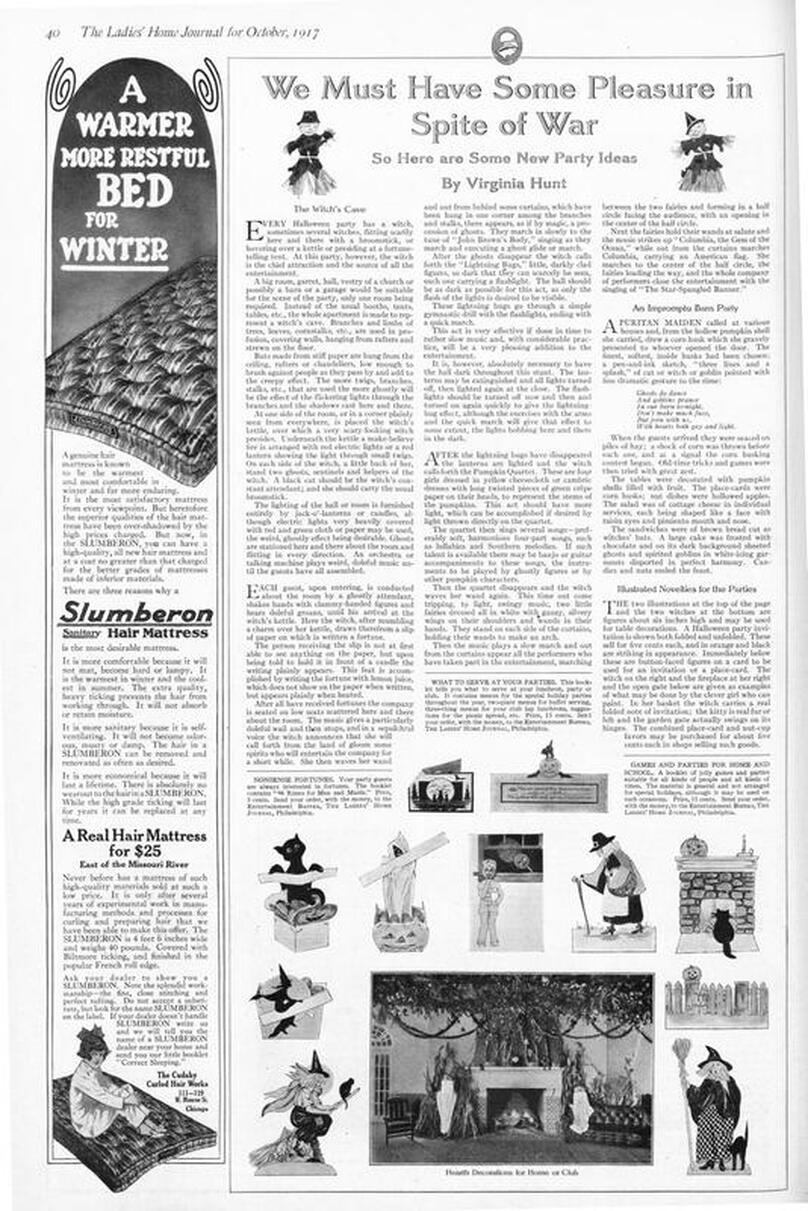
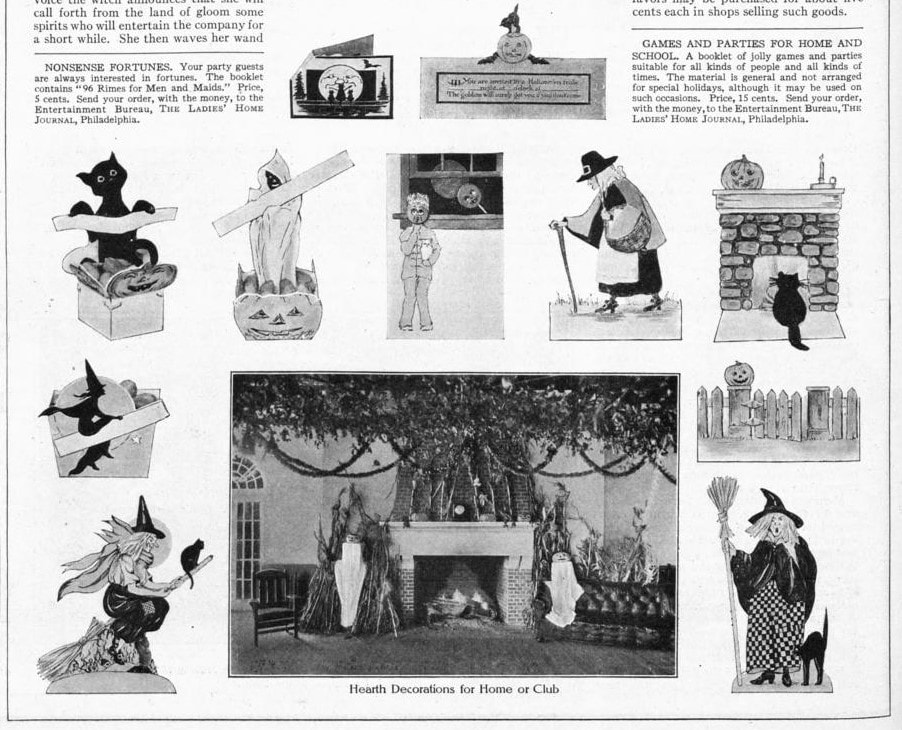
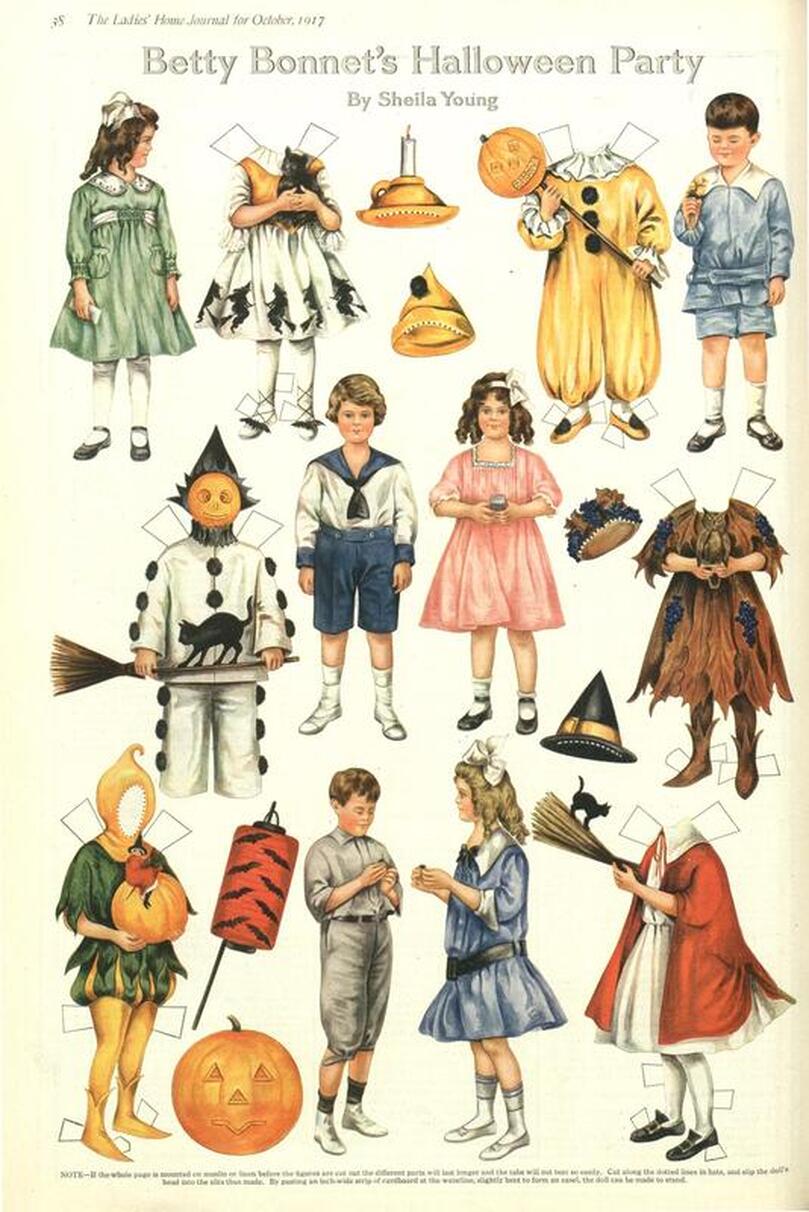
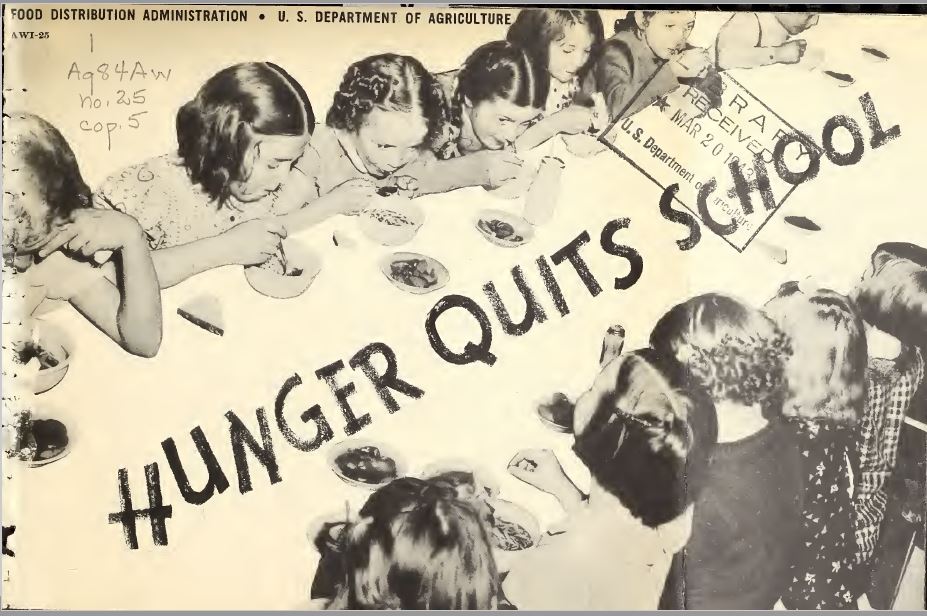
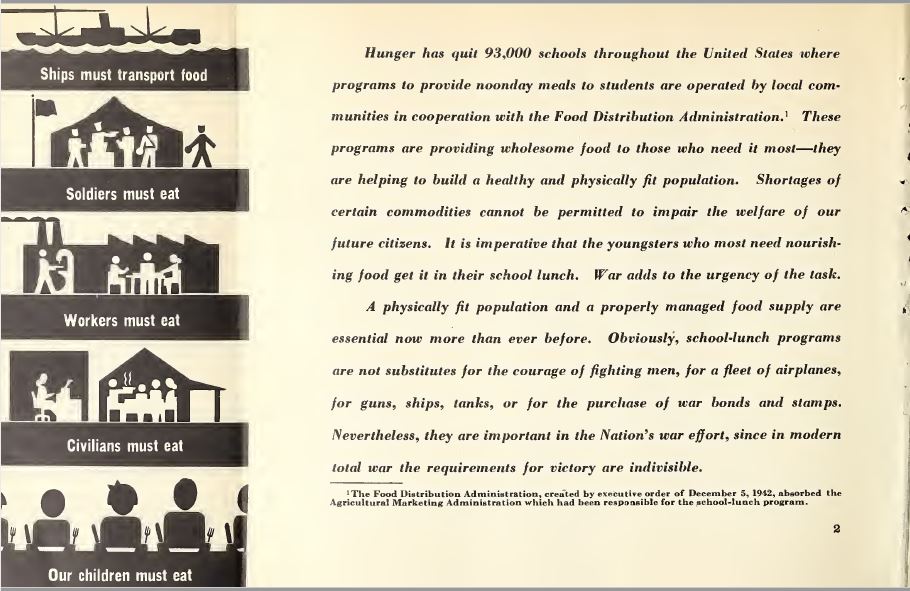

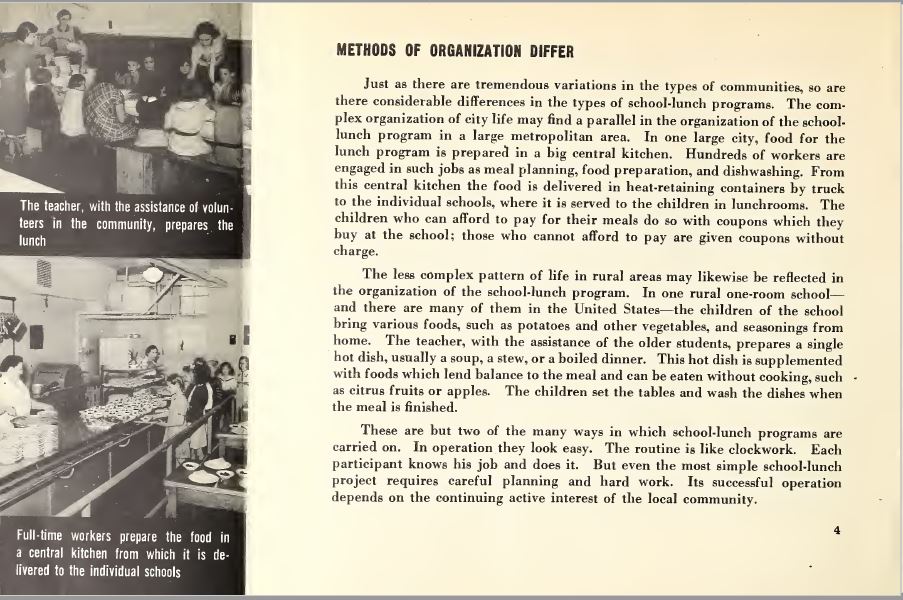
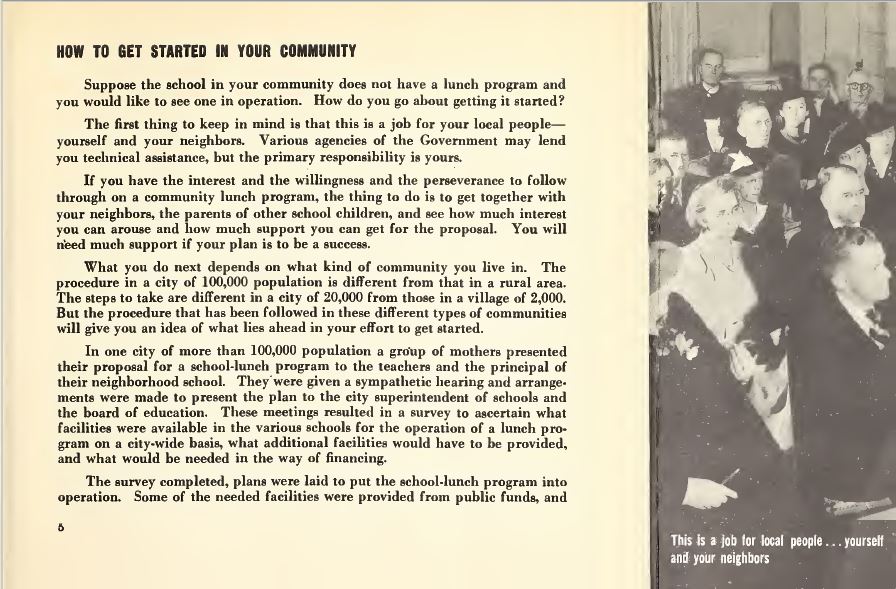
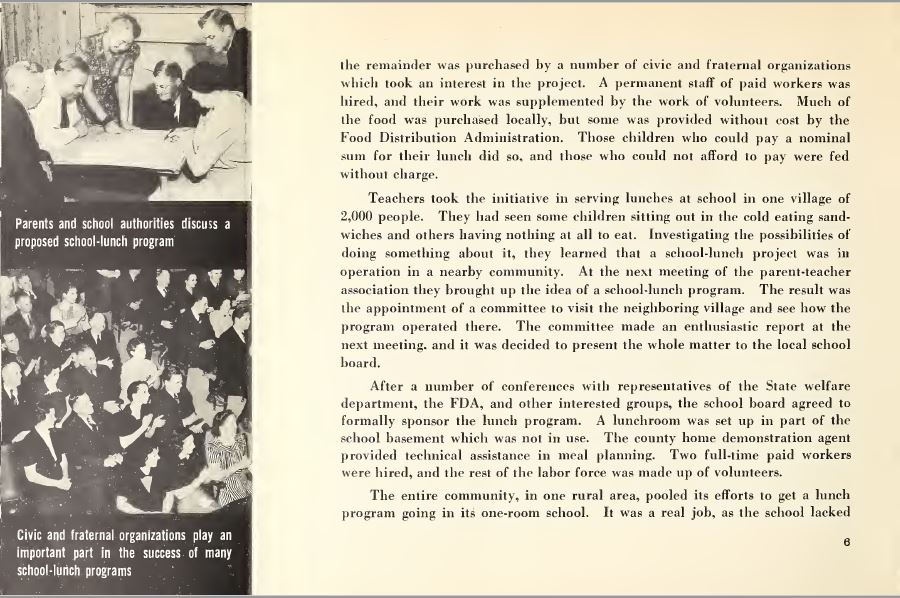
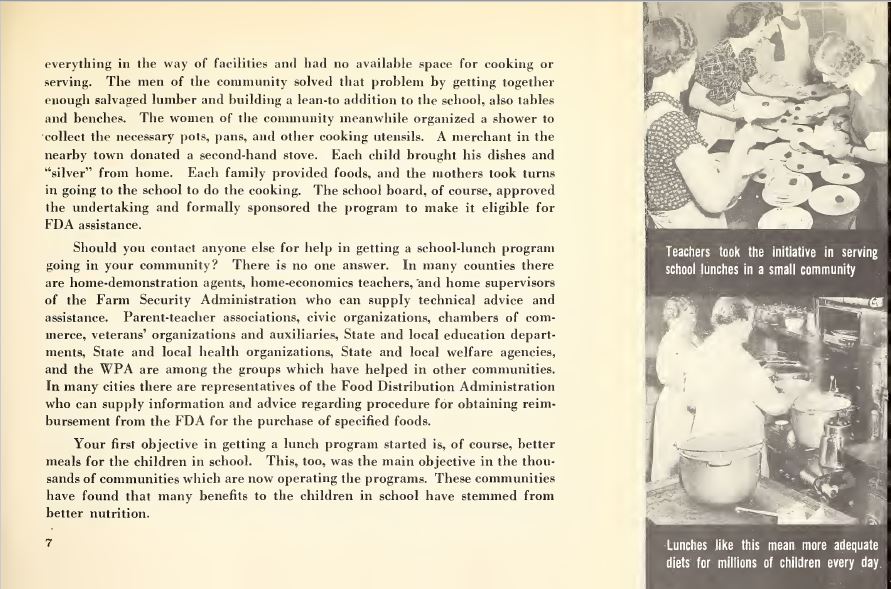
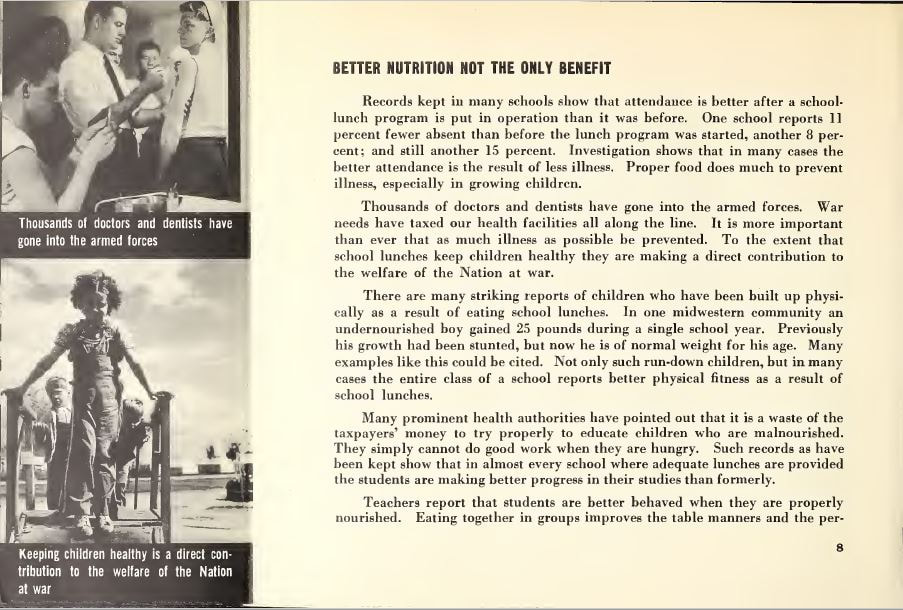
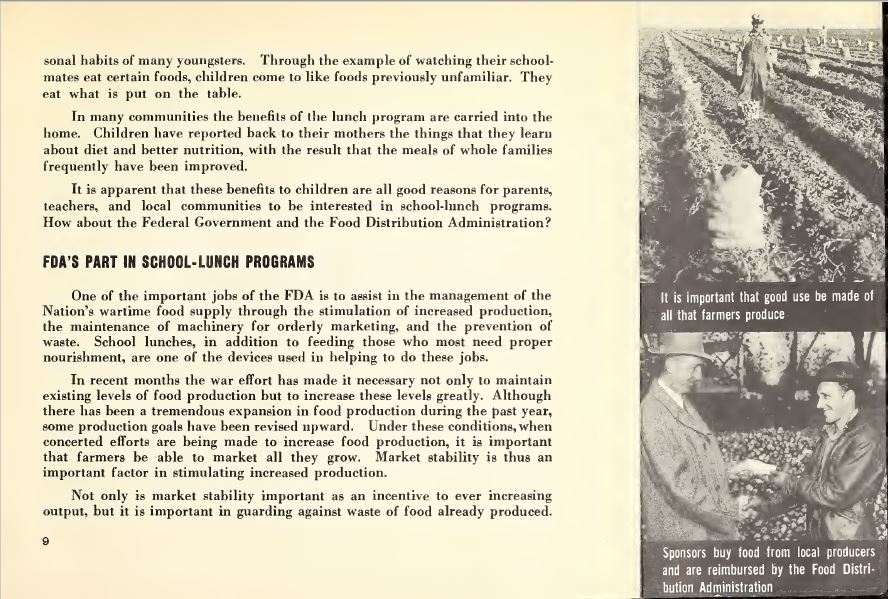
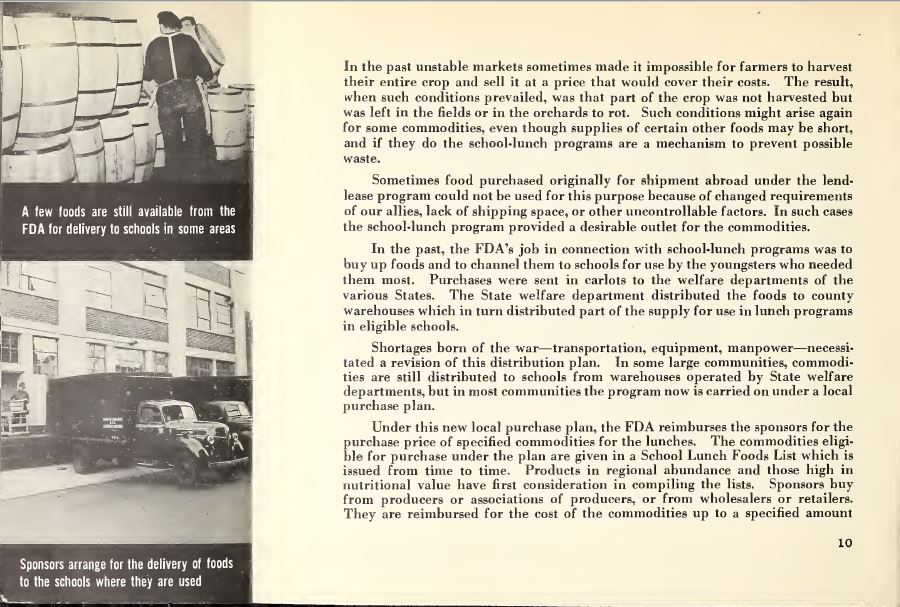
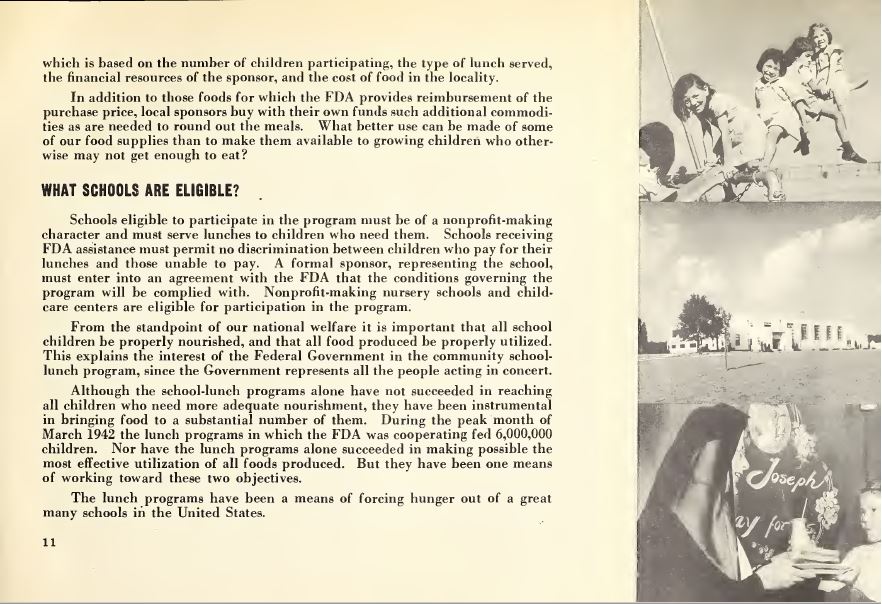
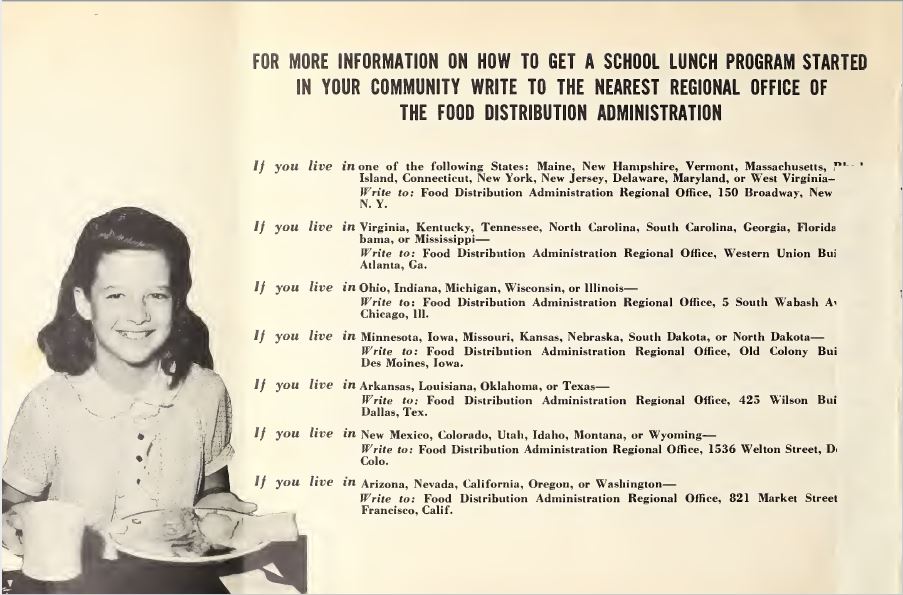
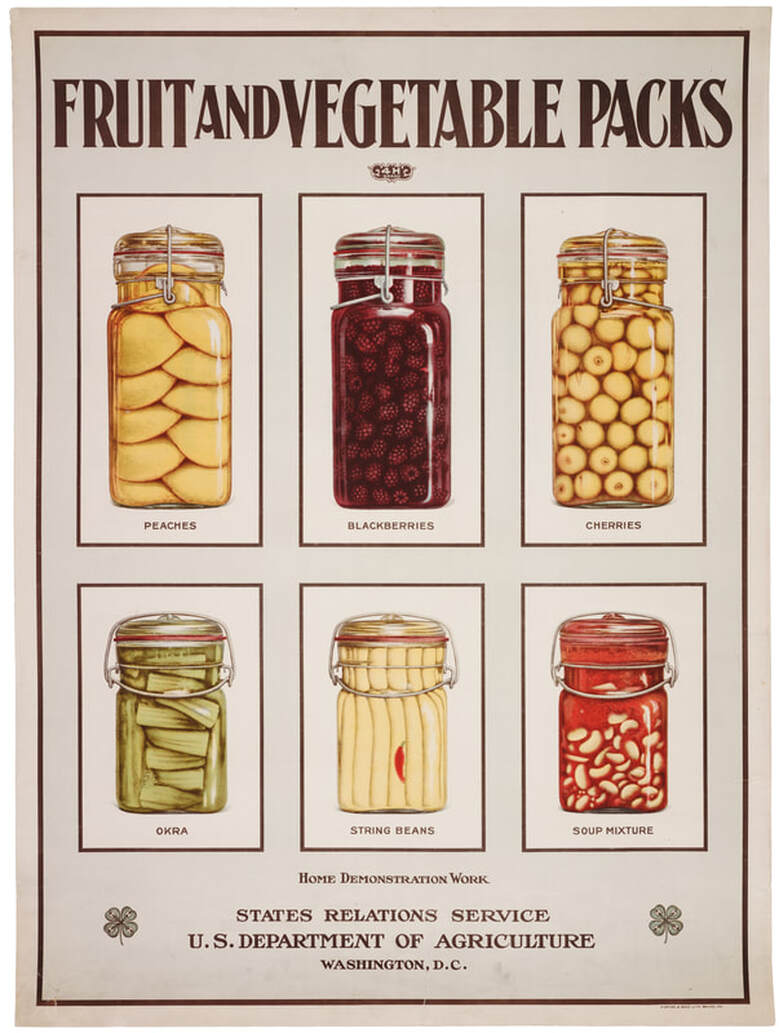
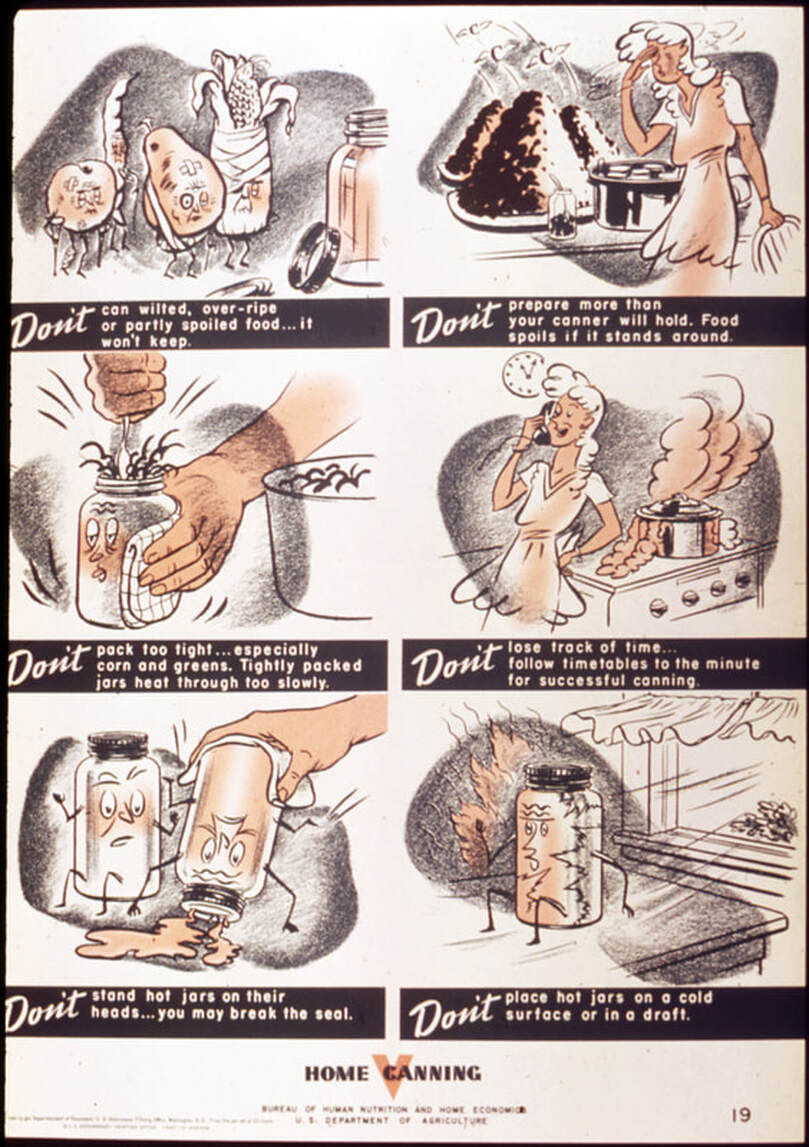
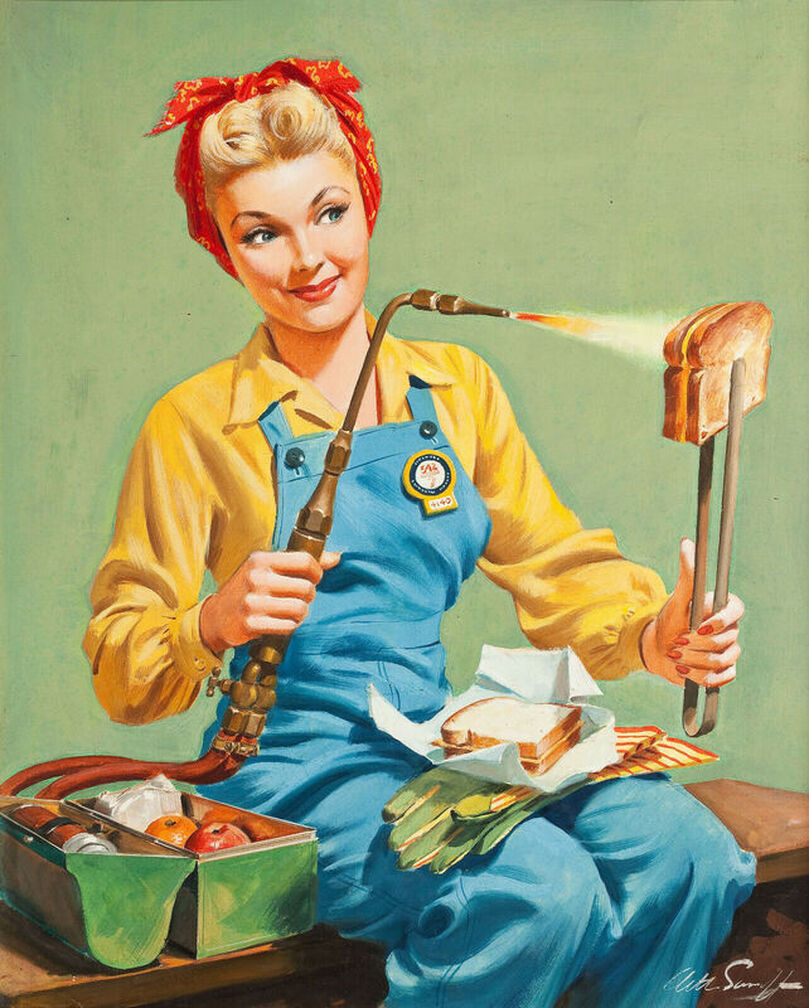
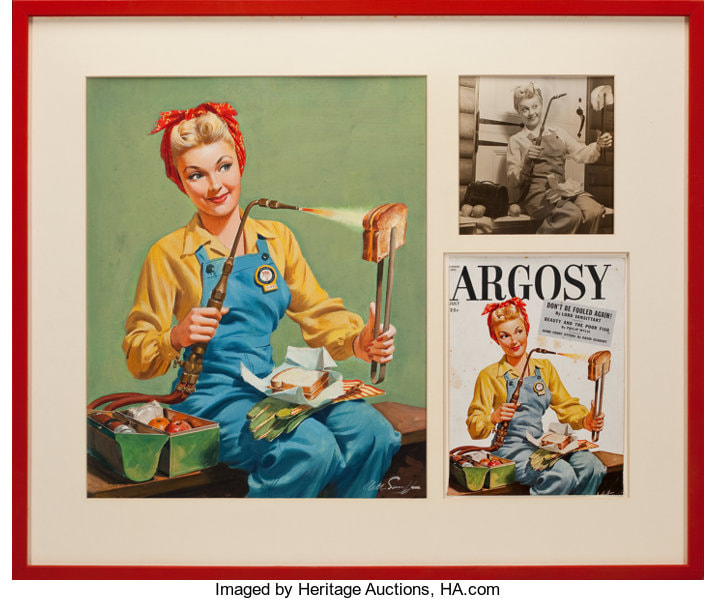
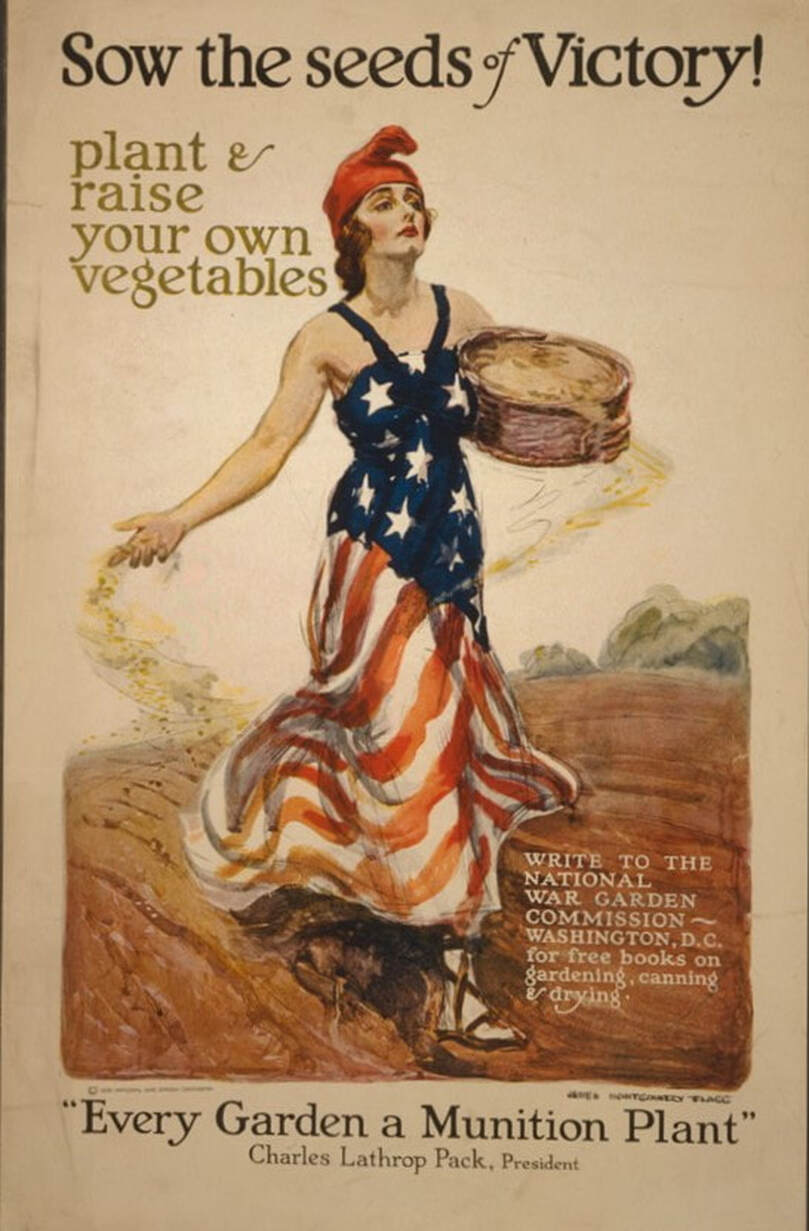
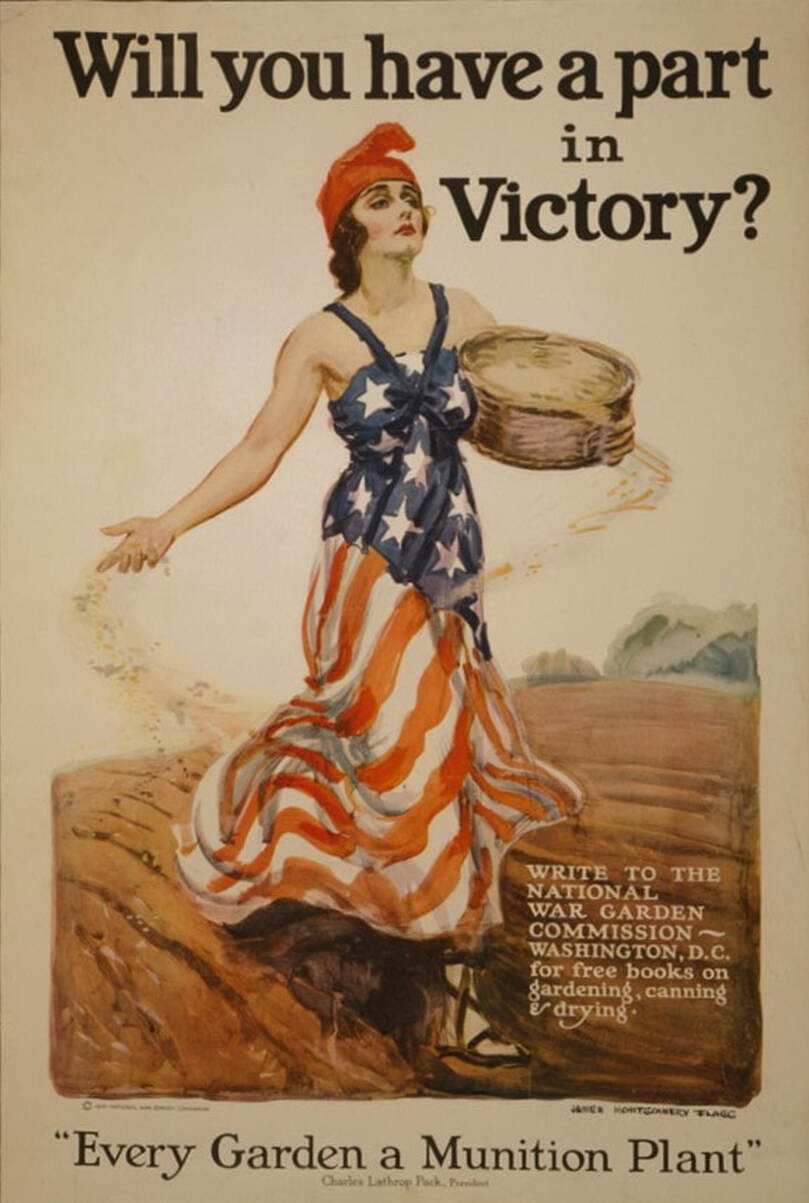
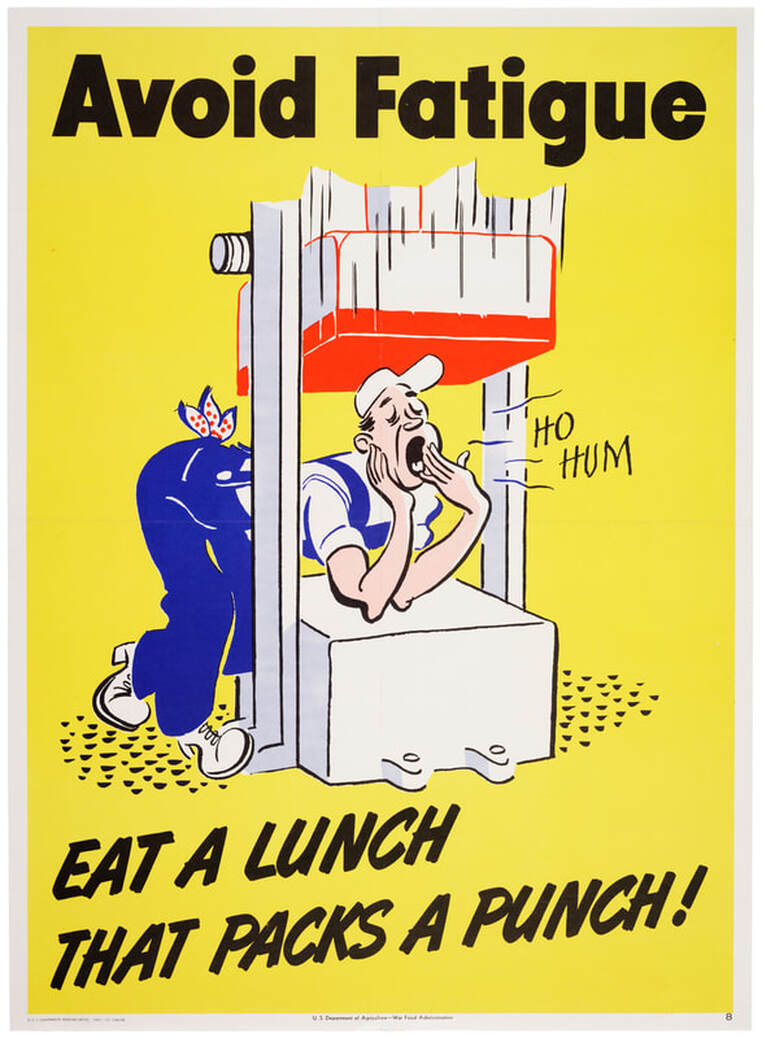
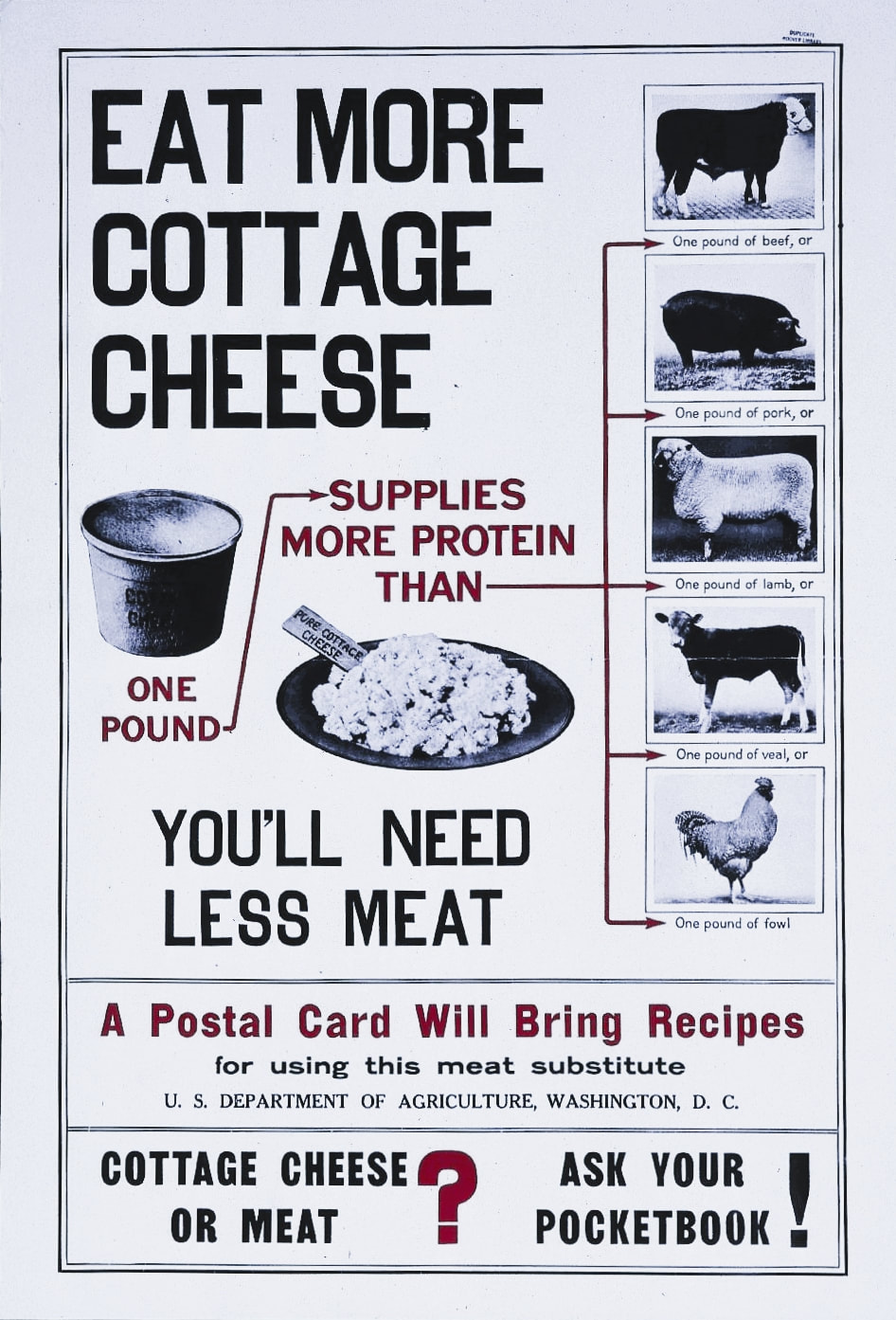
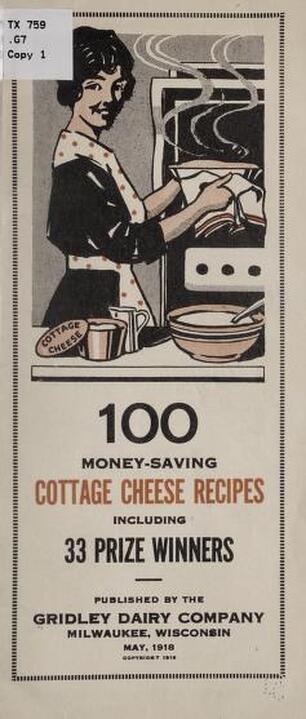
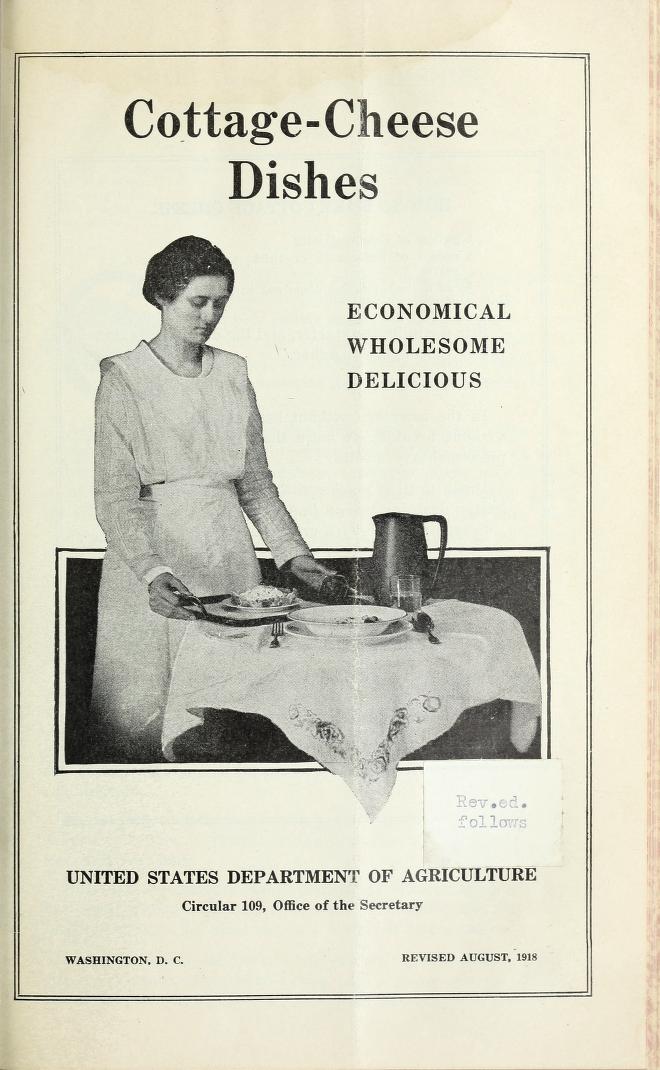
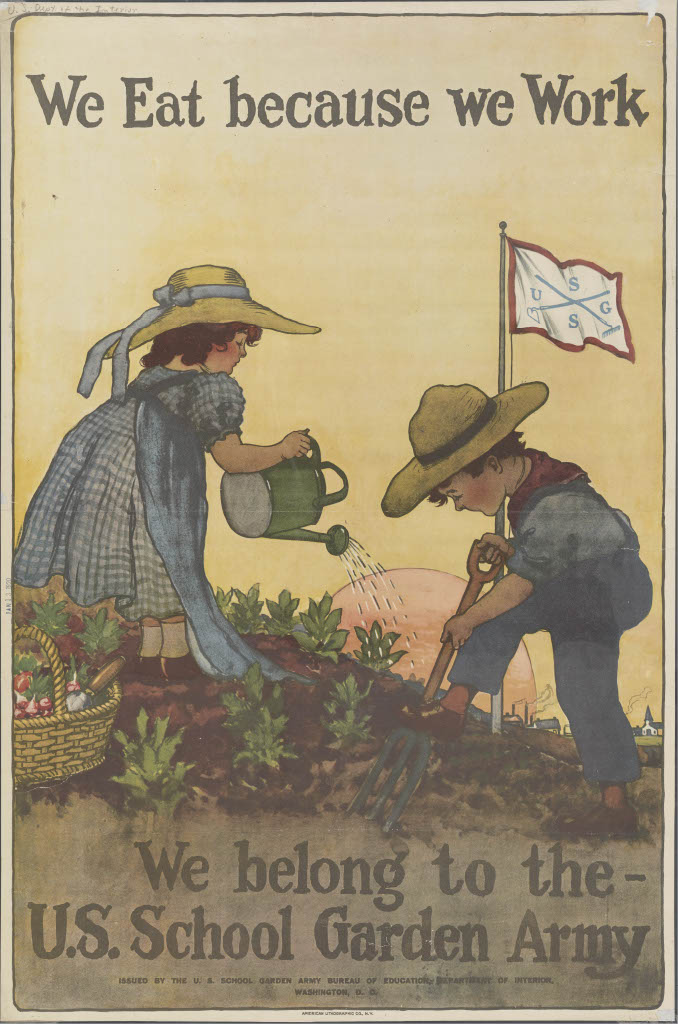
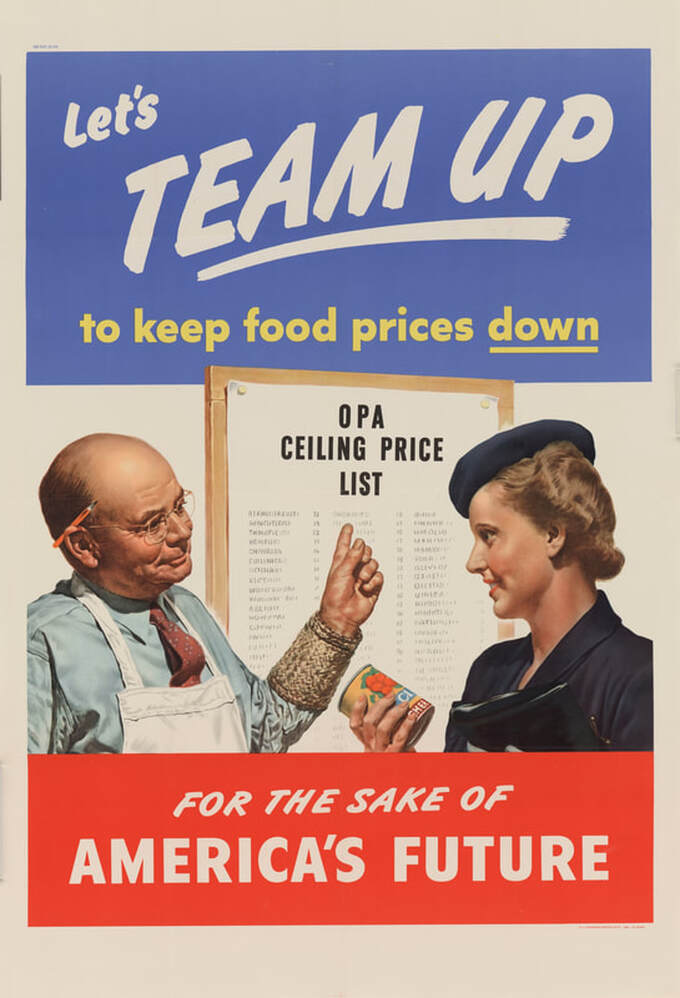

 RSS Feed
RSS Feed